
Studio detail with glitter tondo. Photo by Maryam Eisler
LUX’s Chief Contributing Editor, Maryam Eisler, visits Peter Dayton to photograph and interview the East Hampton-based artist at his studio. Here, Dayton speaks about the intention and ideas behind his artworks as well his relationship with Peter Marino and Chanel
Maryam Eisler: What lies behind the eye candy, the glitz and the glitter?
Peter Dayton: I feel like I’ve reached a kind of pinnacle where it’s just about incredible celebration. And, it’s interesting to me because I don’t always want to make work that looks really good. And somehow this glitter thing, which really shouldn’t have worked, is in fact working. By taking everything out of the picture including figuration, I feel like I’ve really got something that has a lot of meaning.
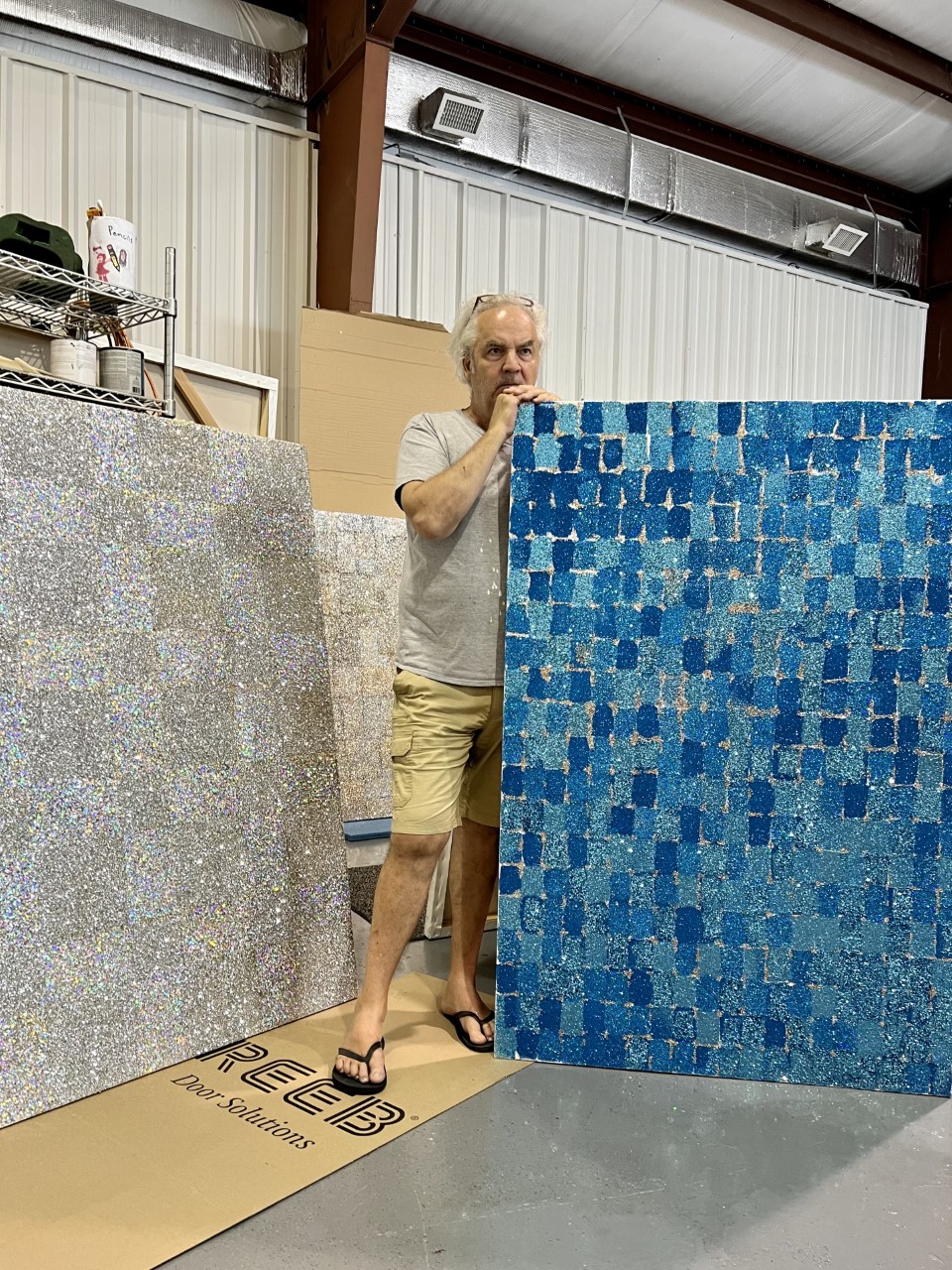
Right Blue Wave, 2022. Left Magic Carpet Ride, 2022. Photo by Maryam Eisler
ME: What’s even more interesting is that you are not staying shy of beauty, something we don’t see much of in the art world these days.
PD: We’re in a new art world. And, you know, to me, beauty is the law. I do it intrinsically. It just happens. I’ve always been a little left of centre because of that, and it just isn’t on the surface. It’s deep. Peter Marino saw immediately that I had a gift for this ‘beauty thing’ and he just took me under his wing. That’s how and why my association with Chanel has been so great.

The Rockets, 2016-2018. Photo by Maryam Eisler
ME: Has the act of ‘glittering away’ all day every day scared you in any way?
PD: It’s a little scary. Yes, because I’ve been spending the past 12 months just doing glitter and, you know, there are bills to pay. But I do feel like there may be a super happy ending to all this. Or, better yet, a happy beginning!
Follow LUX on Instagram: luxthemagazine
ME: I was taken by your choice of words and thought association; you said ‘It’s time for celebration!’ This is a positive outlook, also rare these days.
PD: Well, the negative is so real right now, but let’s face it, this isn’t like the bubonic plague. You know, I don’t want to intentionally make people happy, but I do want to give them a chance to choose happiness. So, I make these paintings. The time feels right for it.
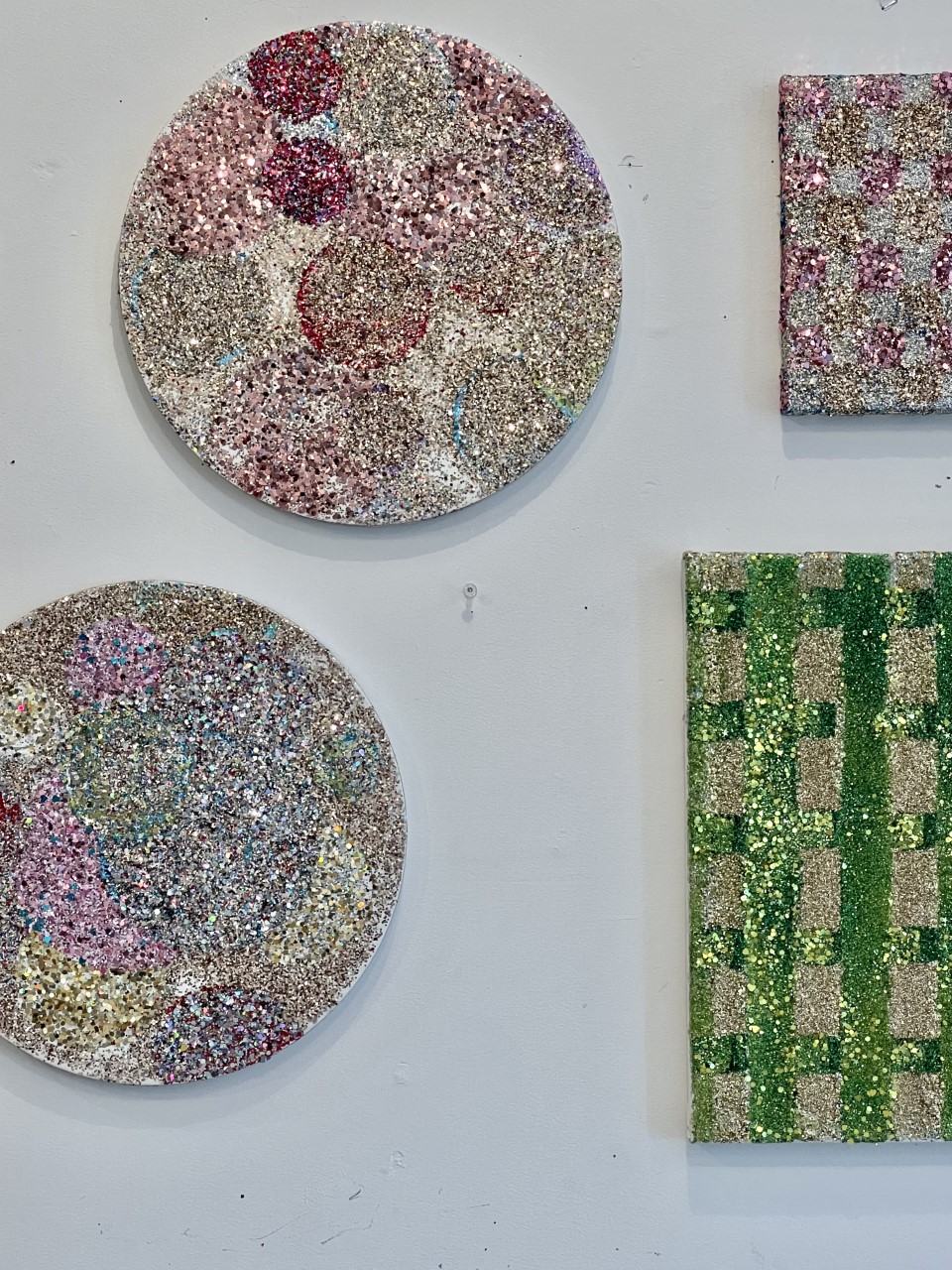
Studio wall detail, Too Many Planets, 2022. Photo by Maryam Eisler
ME: I’m also interested in the idea of space and place. I know you’ve been coming out to the East End [of Long Island] since 1975 and started living and working here full time in 1988. Have things evolved a lot since then?
PD: Yes, there’s been a lot of evolution out here. On a personal level I got married and started a family. And East Hampton as a town has certainly evolved – it used to be dead in the winter. As an artist it was total evolution. I’d been studying art since I was 12 and then ditched art to play punk rock. I basically reinvented myself as an artist out here after living in Paris for couple of years making music.
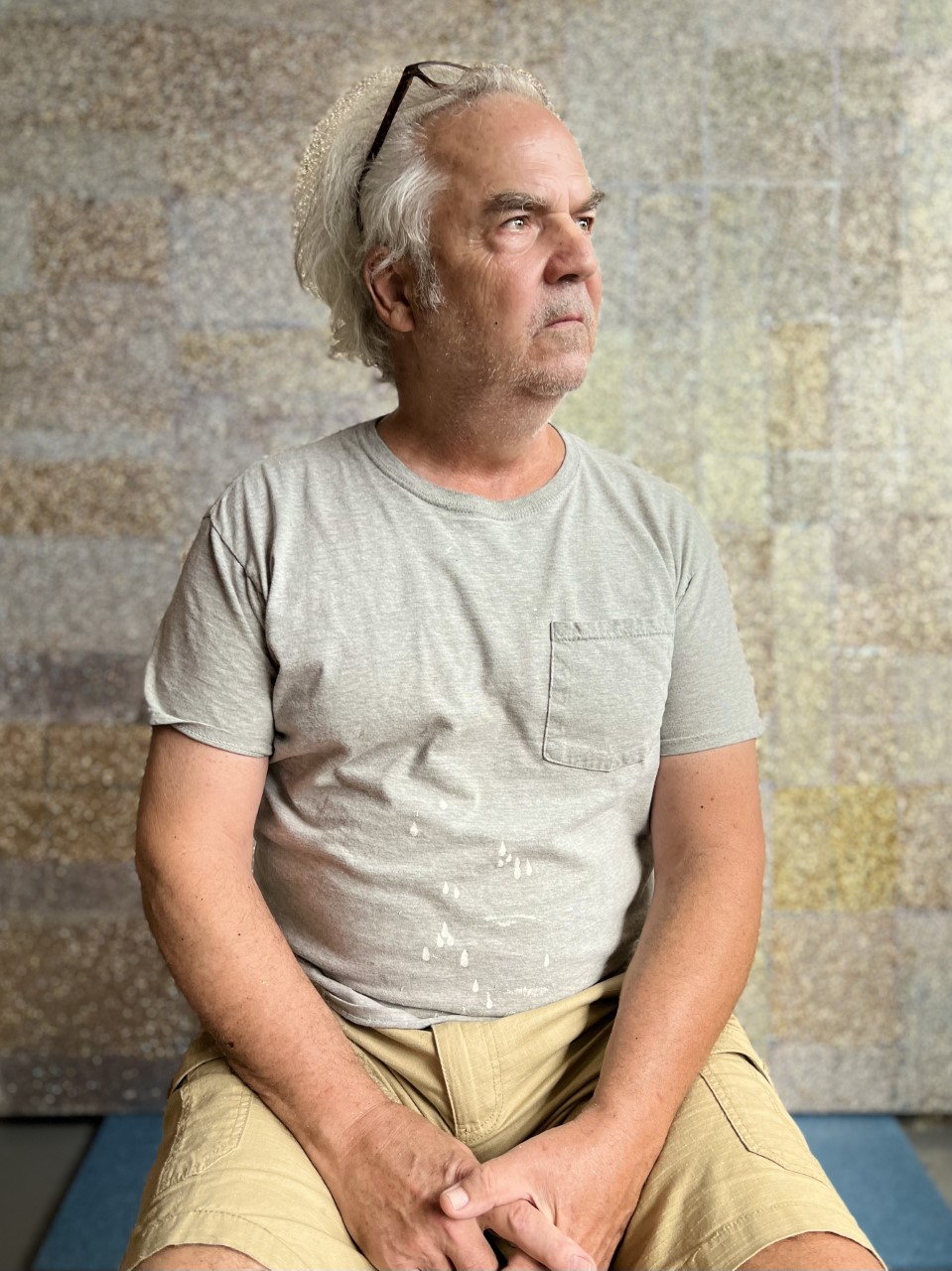
Portrait of the artist. Photo by Maryam Eisler
I also happen to love de Kooning, and I love Pollock; I love the idea of all that is anchored here- even before I was aware of all this, when my mother moved here all those years ago and when I started coming here from Boston where I was studying at The Museum School. I always thought, ‘my Lord, this place is beautiful.’ And then I understood the special light that’s out here. I think De Kooning called it ‘double light’. It relates to when the sun reflects off the water, back up into the sky! I don’t harp on it, but, you know, it is very important.
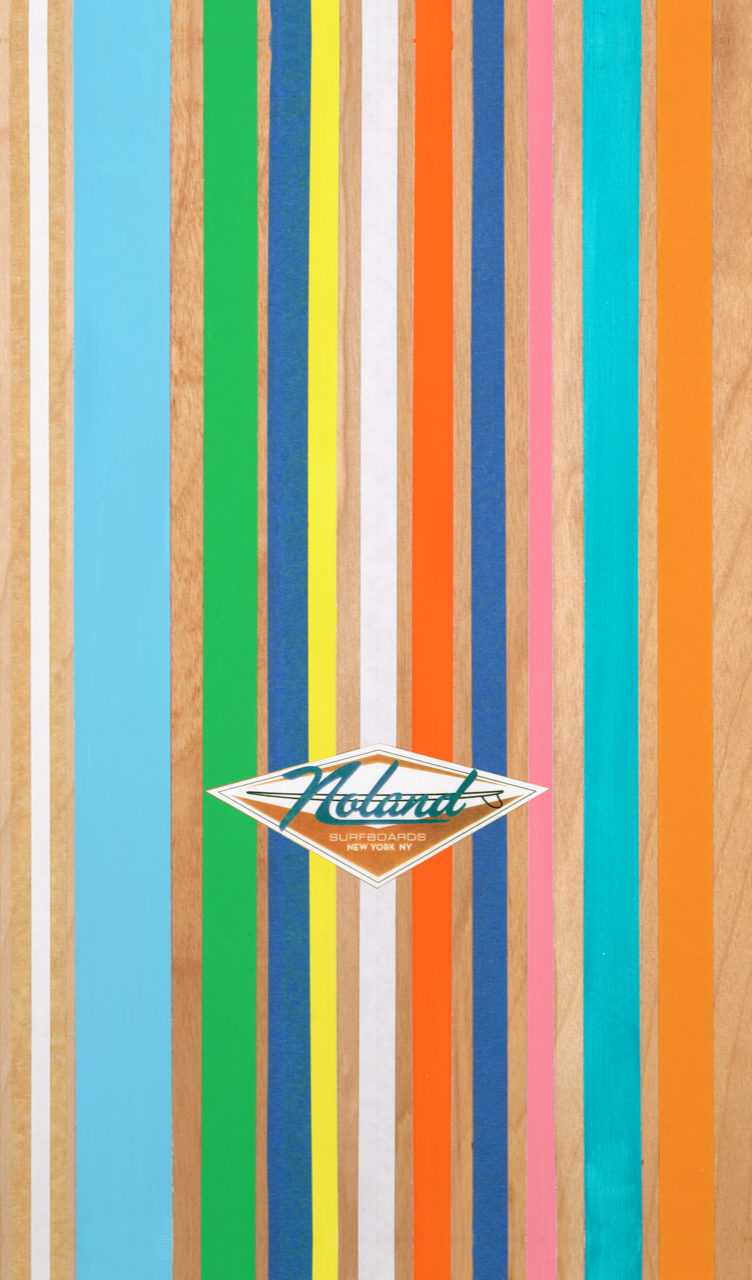
Noland, 2014
ME: In your work, I see surfboards. I see flowers. Where do they coincide?
PD: Good question! The flowers started because I had been doing music professionally for ten years, and then I burnt out completely. I went to Paris for six months to find myself and I stayed for three years. And it was fabulous. And I did find myself. ‘Myself’ was somebody who wanted to grow old in his studio, making pretty pictures – but pretty serious pictures too.
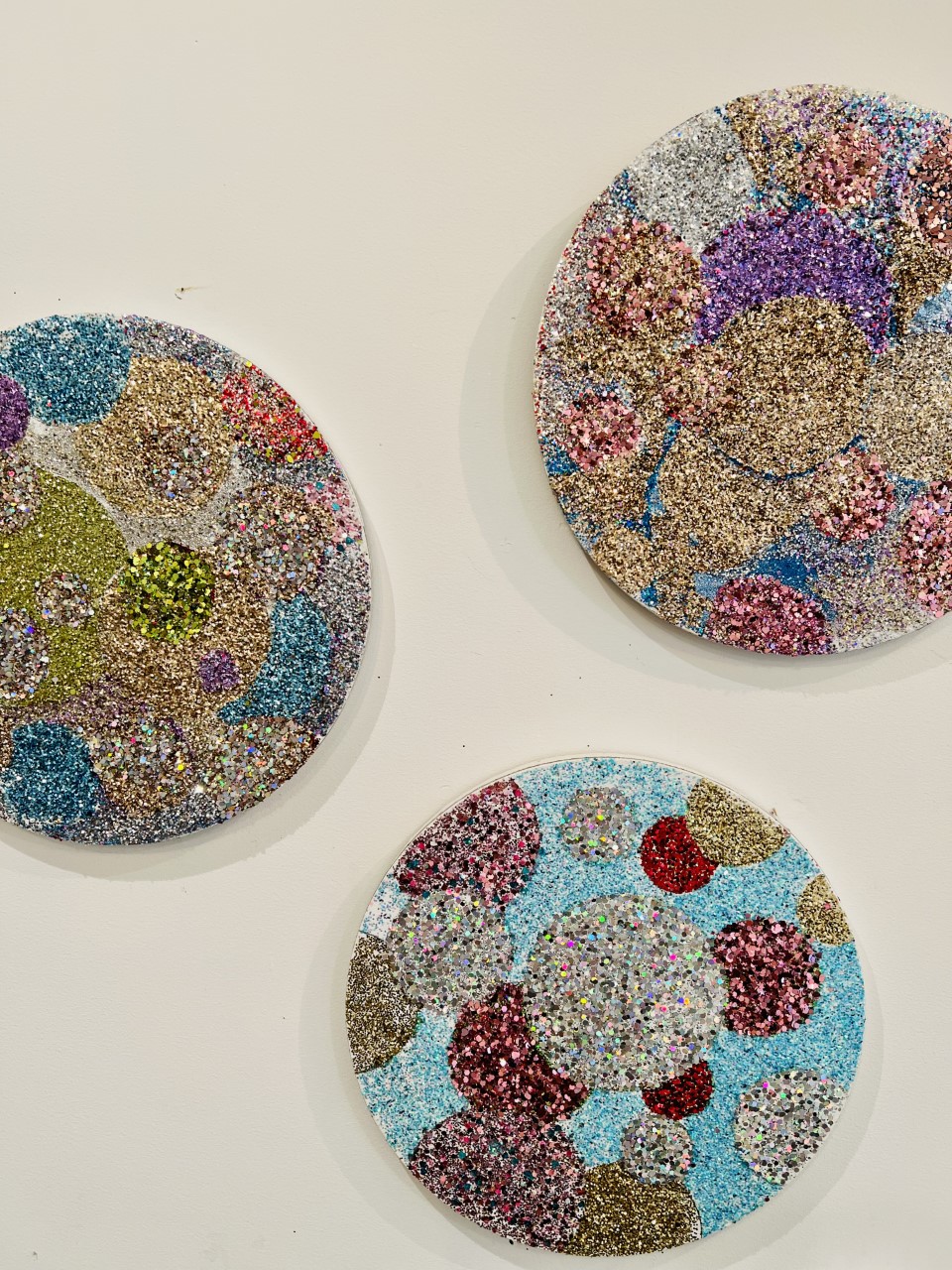
Too Many Planets, detail 2022. Photo by Maryam Eisler
The ‘flower’ phase started because I thought to myself, I missed the eighties. It happened by chance. There was a construction site behind my mother’s house. I saw a big dumpster. I went to the dumpster and I looked in. There were hundreds of House and Gardens from the 50s, and I thought, ‘Oh, wouldn’t that be so weird if I made flower collages out of old magazines and seed catalogues’? In a way it was this kind of totally ‘immature-ish’ thing you know, the kind of craft that grandma would do at the kitchen table. So I made one. And that’s when I first showed that work with Paul Morris in 1994 in Chelsea when the area was just starting. There was a really big splash about the work and it went really well. That’s also when and where I met Bob Colacello and where Peter Marino came in. Bob was so supportive right away. The show was more successful than I could have imagined.
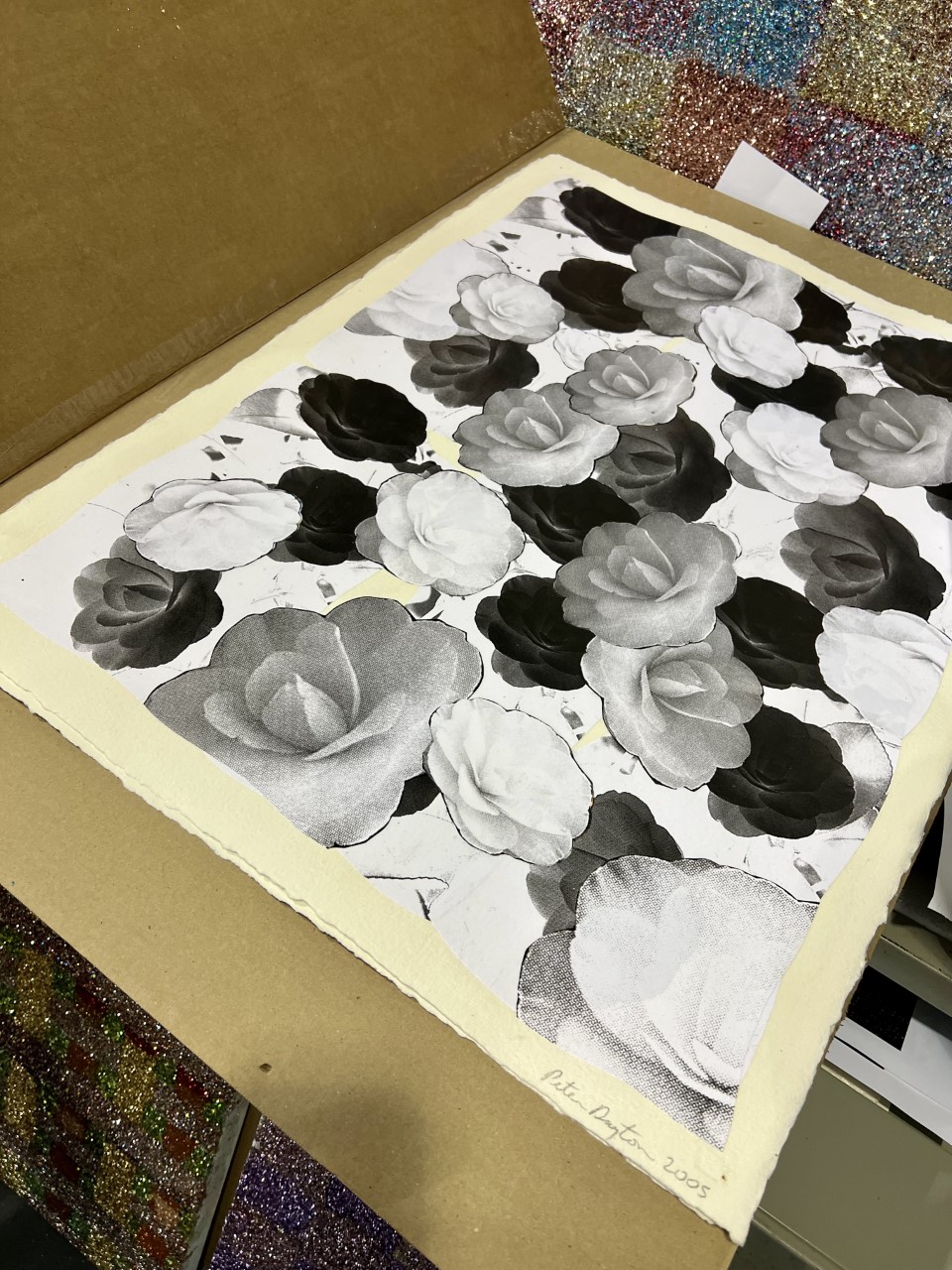
Camellias for Chanel, 2005. Photo by Maryam Eisler
ME: Historically, with the collages, there was a process of appropriation of others’ images which when rearranged, became your own. With these new glitter paintings, however, it’s your own hand at play.
PD: The cut-up method borrows. Taking pictures from a source that you shouldn’t be taking them from and turning it into something – in my case, into something that was weirdly beautiful.
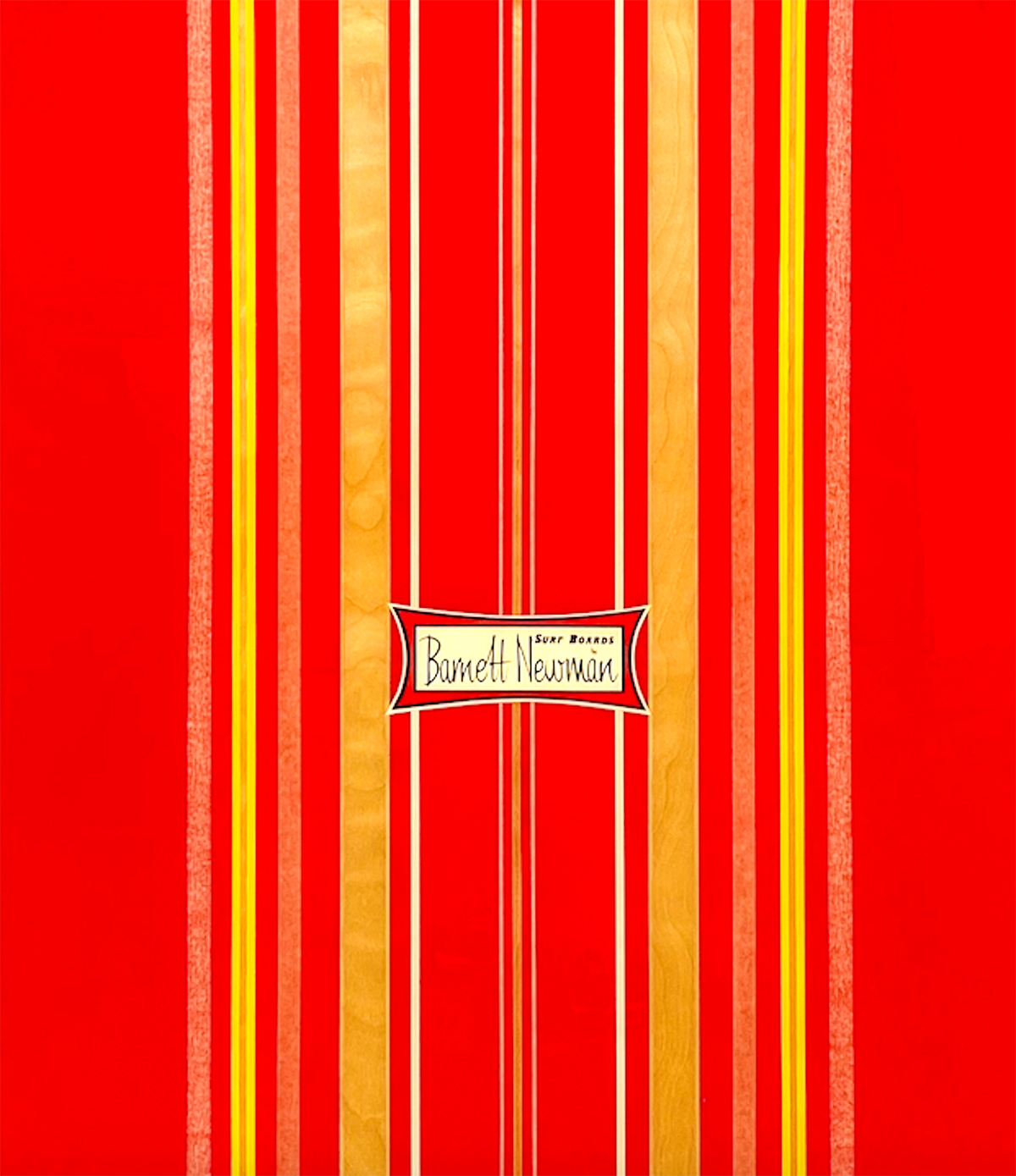
Surfboards by Barnett Newman, #4 New Generation
ME: And if it’s good enough for Chanel, it should be good enough for most! Tell me about your relationship with Chanel over the years.
PD: It’s been great. Peter [Marino] was collecting my work early on and doing things with private clients and for himself, too. He’s been supportive all the way. It must have been at least 12 years ago that he contacted me and said, ‘I want you to do the interior of the elevator for the 57th Street Chanel store’. And I’m saying,’ sure, I’ll do that’. So I made a map card of all these small Camelia collages. I showed that to him and that’s how he designed it. And then I did one in Beverly Hills. And I think that one is still going. I also did one for the Peter Marino Foundation recently, which is amazing as it’s permanent.
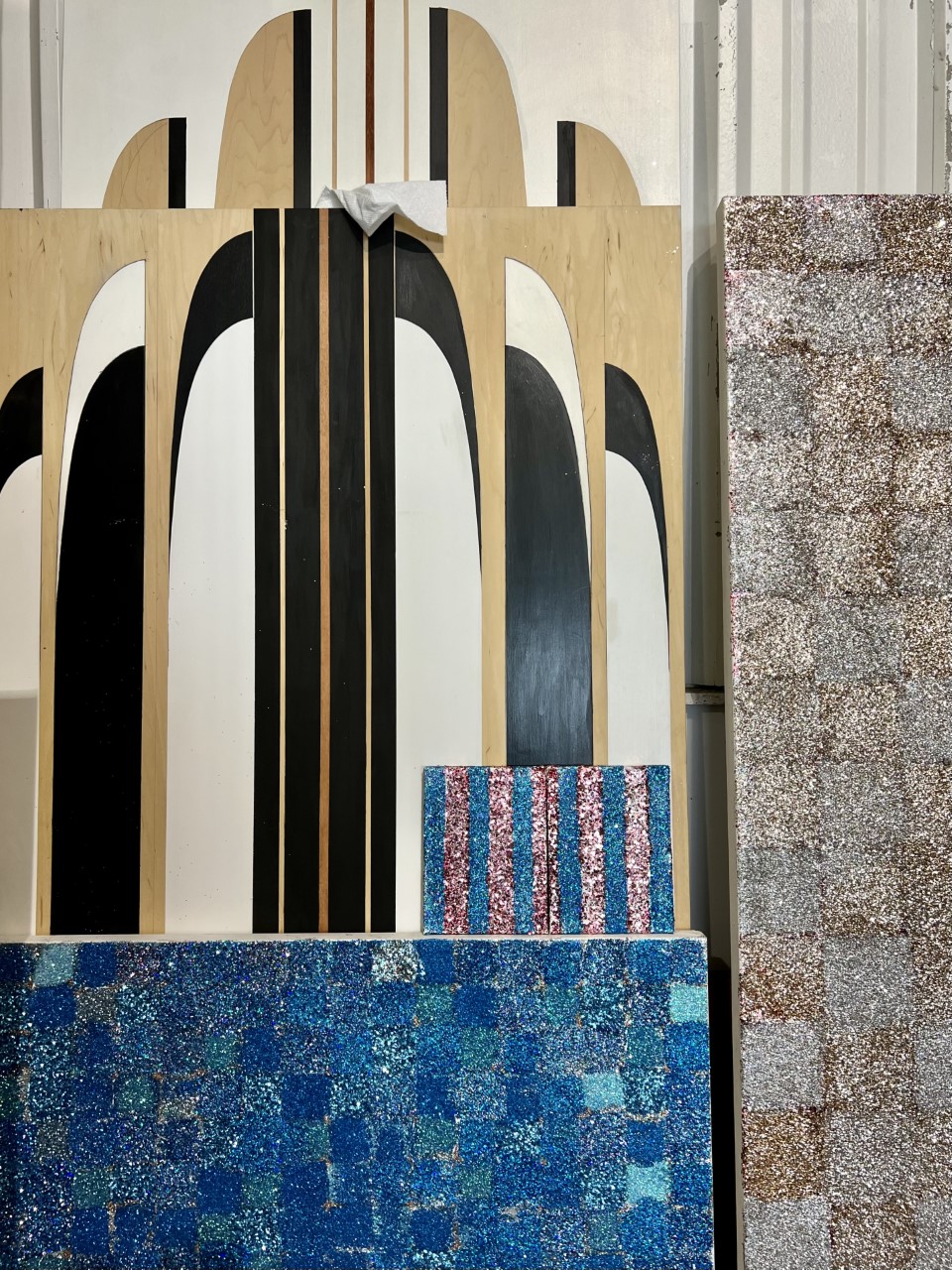
Studio detail, Northwest Coast Surfboards, and glitter paintings. Photo by Maryam Eisler
ME: It seems like you are highly influenced by the lifestyle of this area, in particular anything that has to do with surfing. You then associate your ‘surfboards’ with known art world figures. Please tell us more about this.
PD: I feel like all the artists from the early 50s all the way to pop art were acting with a lot of swagger and they were just doing these minimal paintings that were so challenging. And I have always equated them with surfers, those who go out there by themselves and ride these giant waves. So, I just put the two together. What they did was like a sport. And very physical. And there’s also the American cultural idea of surfing. I’m not a ‘surfer’ but I am a water person. I boogie board and belly board and all that stuff. There’s also that idea of great freedom in the water.

Portrait with glitter paintings. Photo by Maryam Eisler
ME: And it all started with Barnett Newman?
PD: Yes, when I saw his painting in the Met, ‘Concord’. There are two pieces of actual tape, which I think he left in the painting. But if he didn’t, he taped it off and pulled it off. I forget. And I said, ‘Oh, my God, that’s the stringer on a surfboard’. Because every surfboard in the centre has a piece of wood running through it for stability so it doesn’t snap in half easily; and I just found that fascinating. So, I went ahead and made one exact copy of the painting, kind of green, and put his name on it. And I remember Robert Rosenblum was alive then. And he said, ‘Boy, these are really odd, Peter. I kind of see what you’re doing, but I’ve never seen this before’. And I thought to myself, ‘Well it must be cool!’
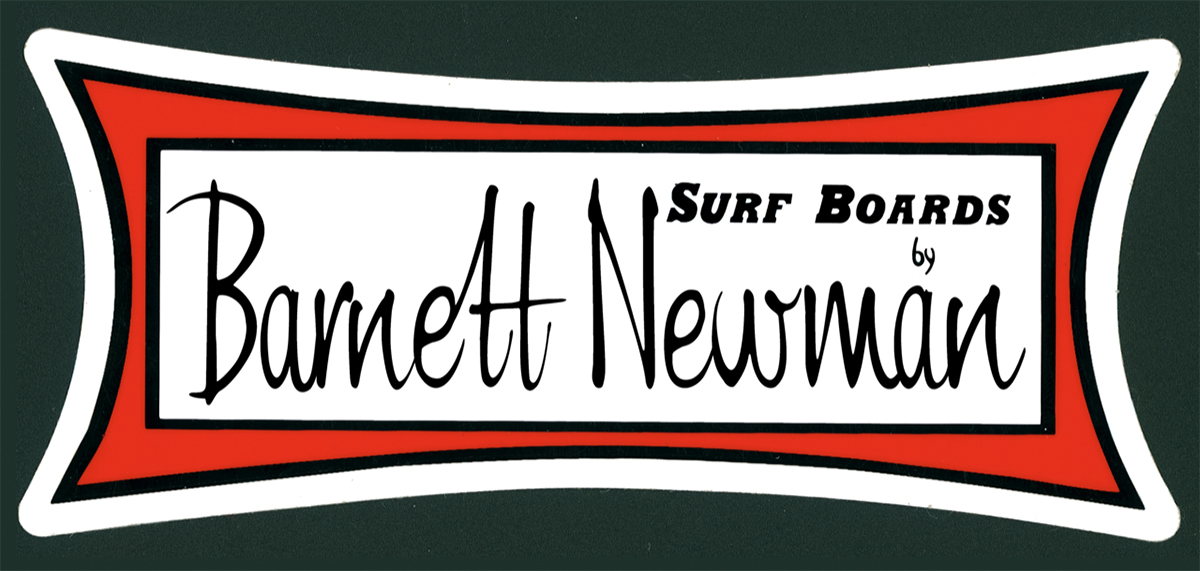
Surfboards by Barnett Newman, custom made decal, 2008
ME: Who are your other icons?
PD: Gene Davis. Which is the striped one, he did multi-coloured geometric stripes on canvas. I’ve also done Ken Nolan and Frank Stella. In all cases, I’ve done a facsimile of their works and superimposed their names into the actual surf decal. Dewey Weber is placed in the same script as Barnett Newman. So when a surfer sees that detail, he goes, ‘Oh my God, Dewey, Who’s Barnett Newman?’ Because I also equate the artists in their large studios in Soho all by themselves, smoking cigarettes, staring at these giant paintings with guys in California, making surfboards in their garages; they’re all kind of doing the same thing. Even though one is super high culture and the other is not, they’re kind of the same thing.
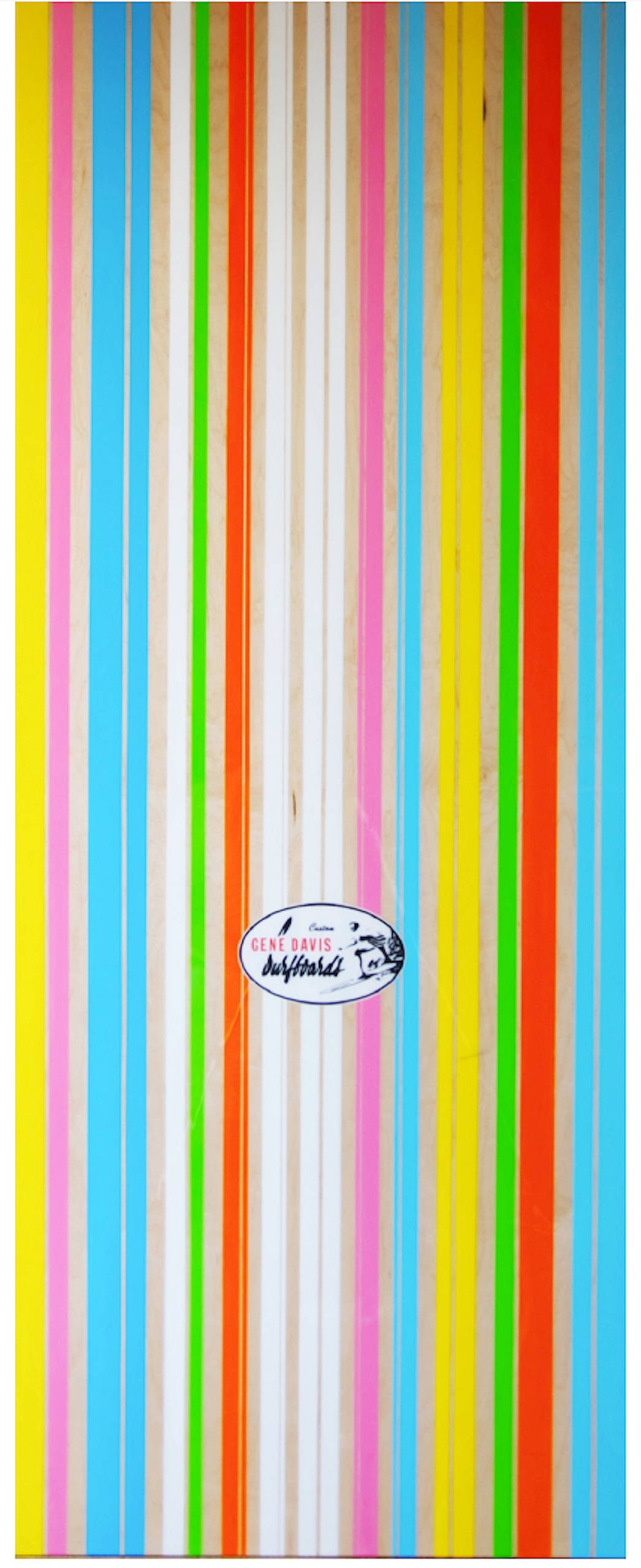
Surfboards by Gene Davis, 2007, collection Carl Bernstein
ME: But that’s what Warhol did- marry high and low culture so seamlessly.
PD: They come together. They always do.
Read more: An Interview With KAWS
ME: You were once part of this band called ‘La Peste’ out of Boston. Music is a different form of expression, but it’s still part of your own language, your identity…two complementary worlds, would you agree?
PD: Yes, I still have the guitar to prove it! And there’s great new interest in my band, maybe even a double album coming out next year on a label in Brooklyn. It’s really exciting. It’s been 45 years …
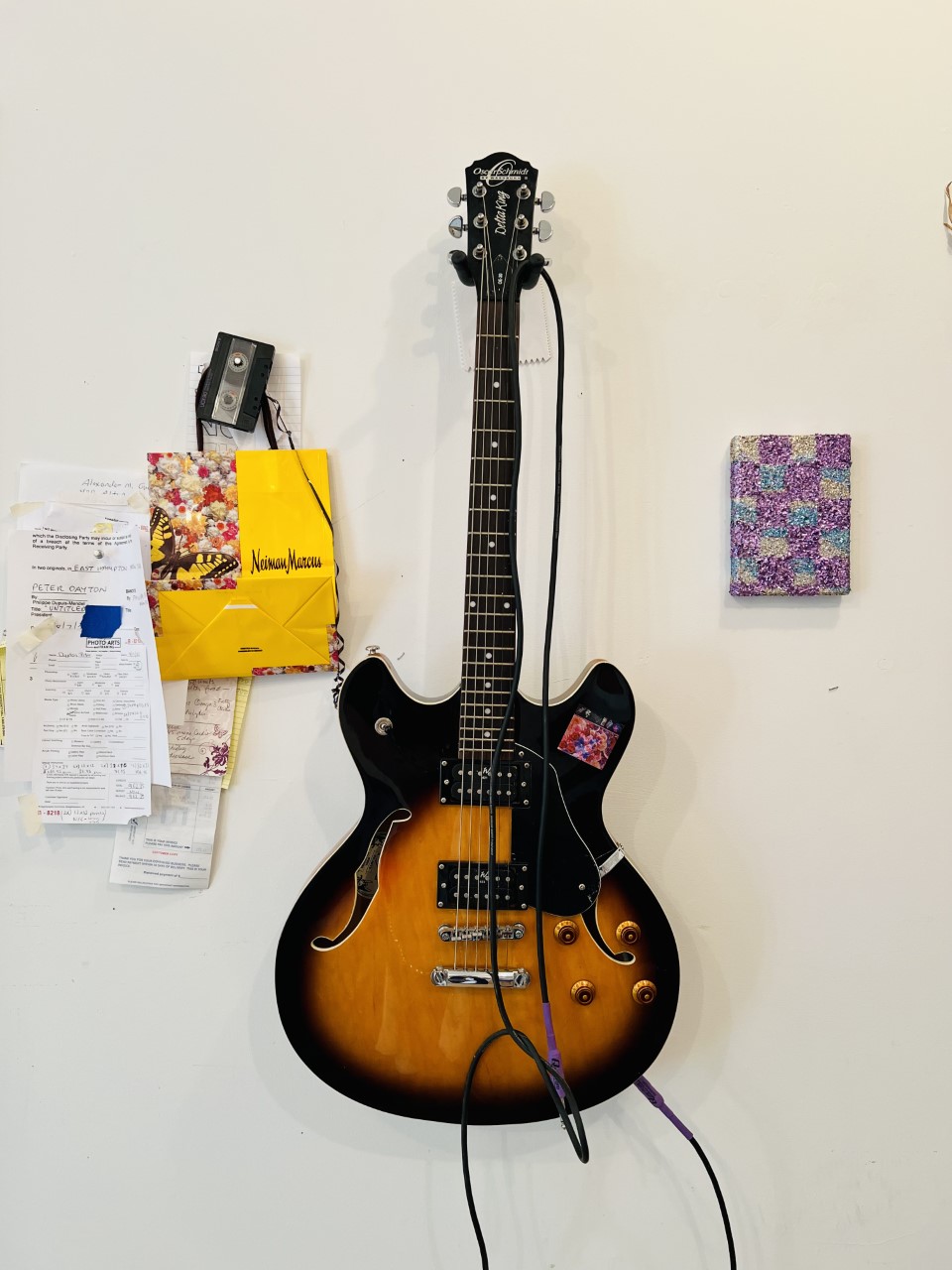
Studio Wall. guitar with glitter. Photo by Maryam Eisler
ME: Talk to me about your relationship with Peter Marino. He’s been a patron of your work.
PD: Peter’s a genius and it’s a privilege making work for his projects. He’s incredibly knowledgeable about absolutely everything that has to do with art, architecture, music – a total renaissance man. I’ve never met anyone who knows that much and can articulate it in front of you at any given moment. He’s a patron to a number of artists and his support has been so important to me. Working with him is great because he gives me great freedom to do what I want to do and that’s all an artist could ask for.
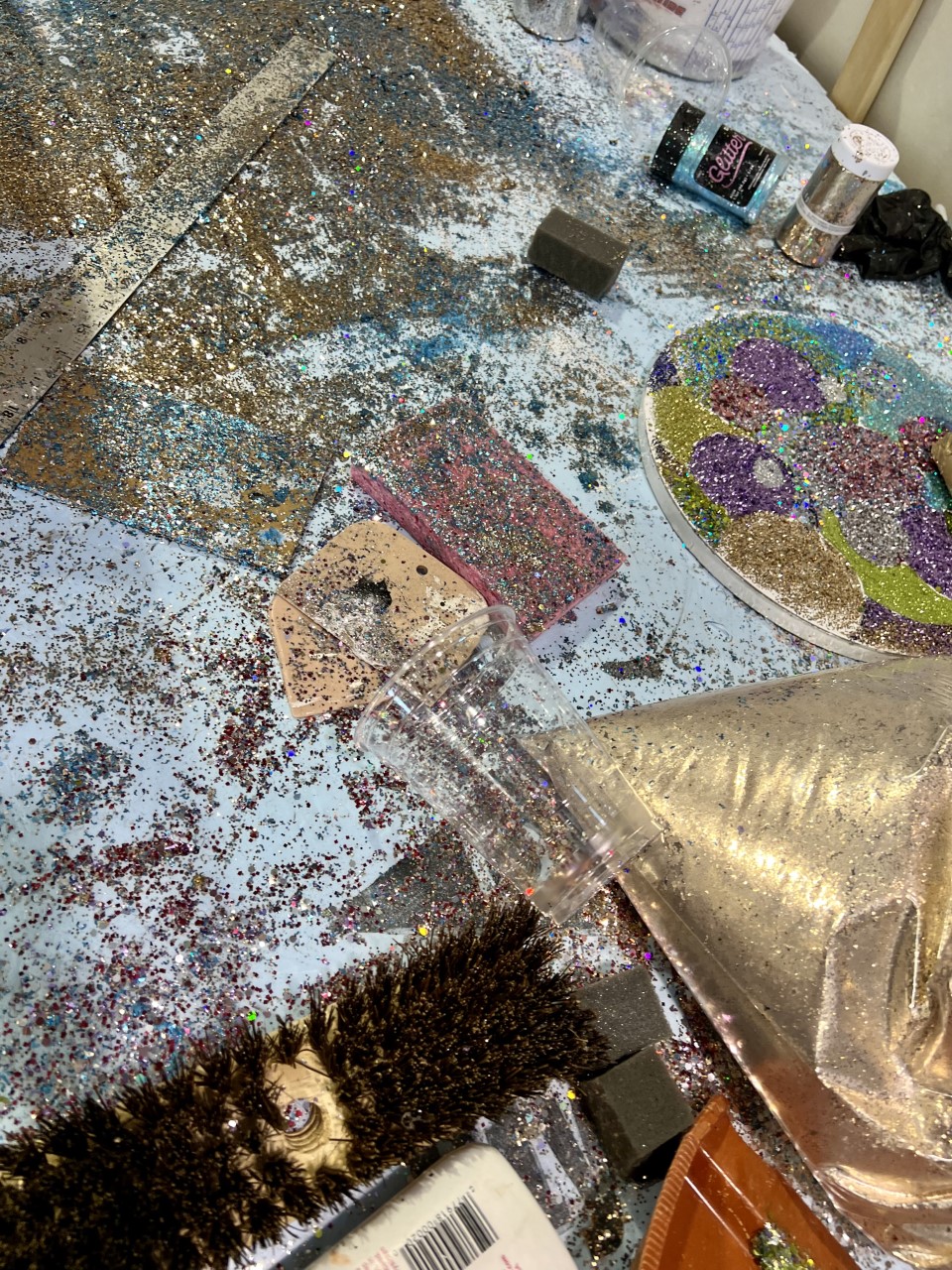
Studio work table with glitter and brush. Photo by Maryam Eisler
ME: A final comment from me: I could practice yoga in front of your paintings and just wonder with my eyes. Such serenity!
PD: Thank you. I think the glitter is here to stay, for the world to enjoy. Even though the refraction of light is so busy, there’s a certain calmness to it all. That’s probably what you feel. So I invite you to sit back, relax and lose yourself in it all day!
Find out more: peteredayton.com

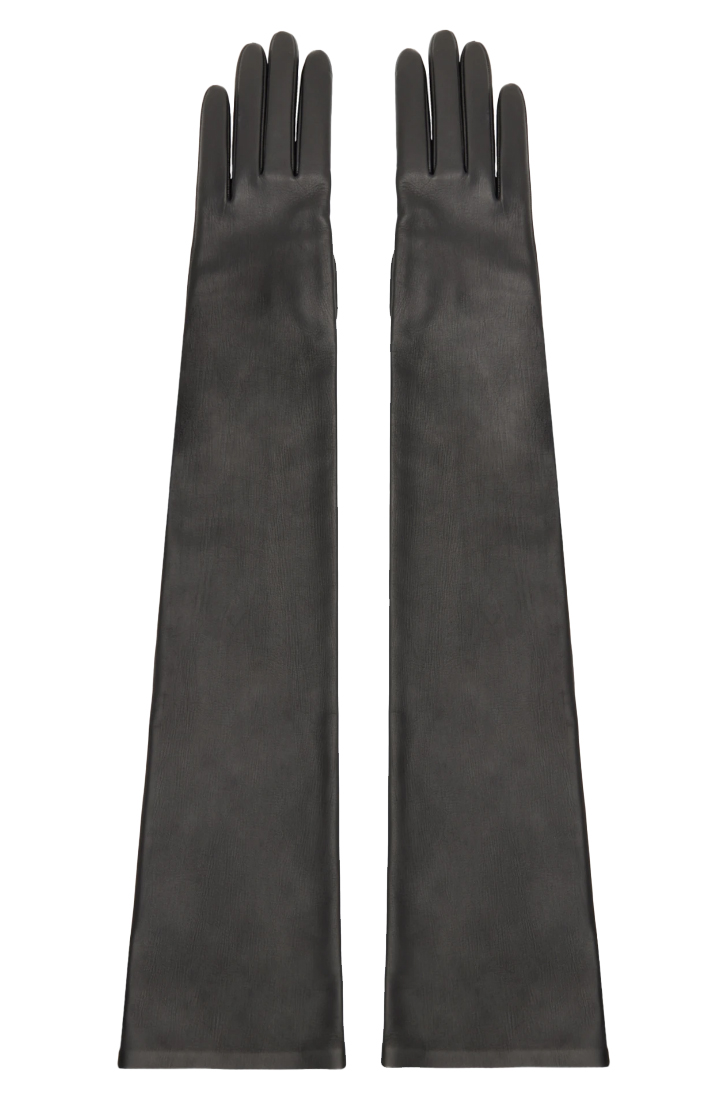
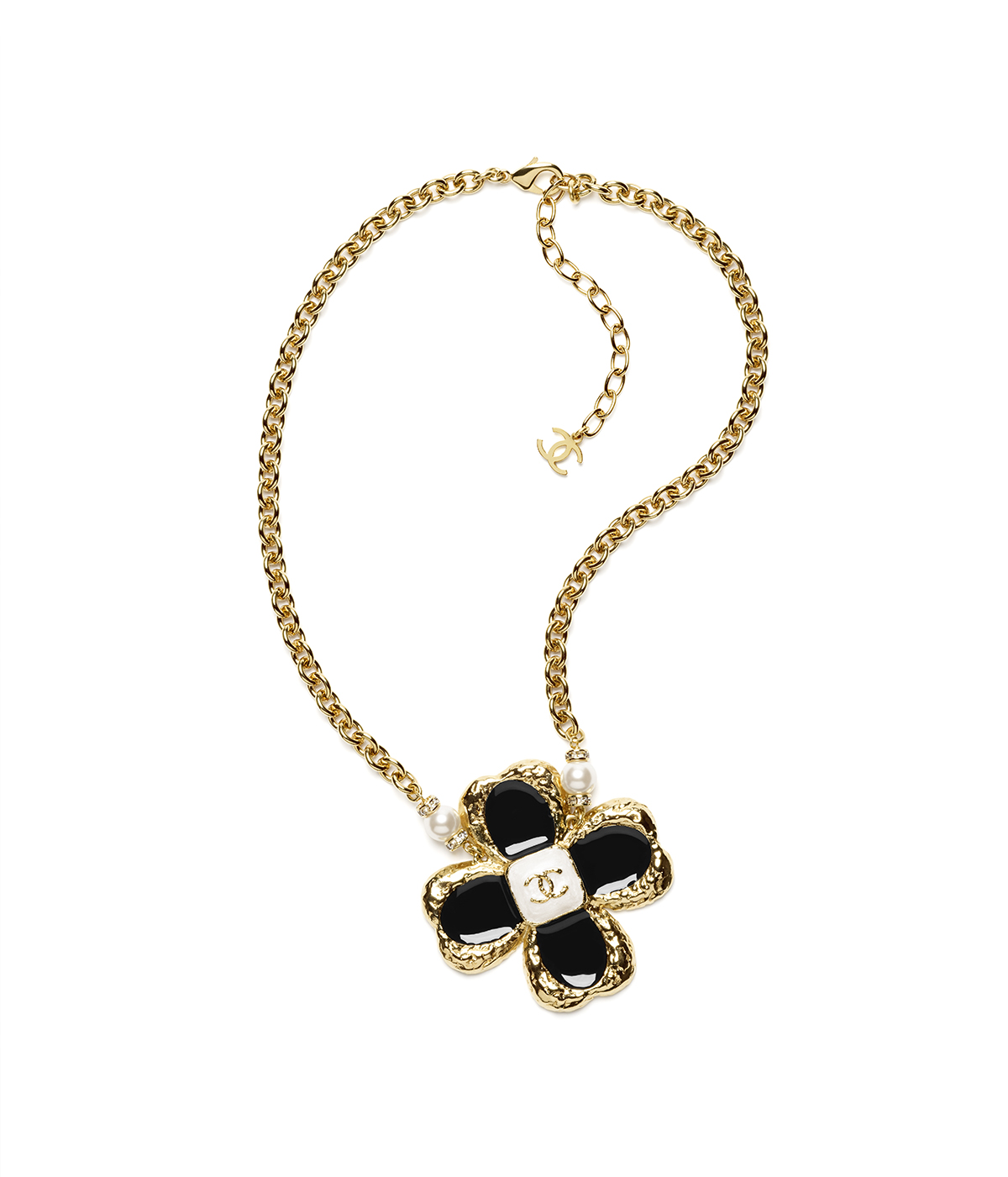
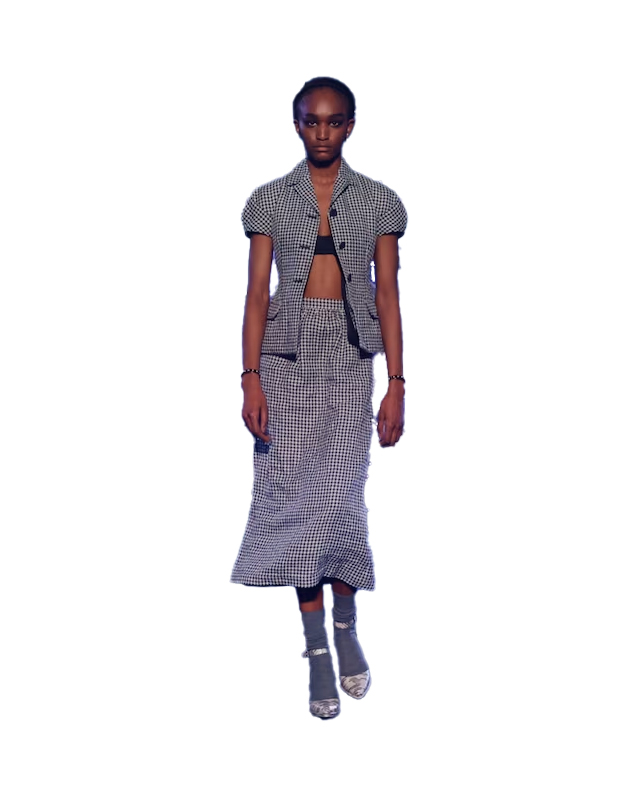
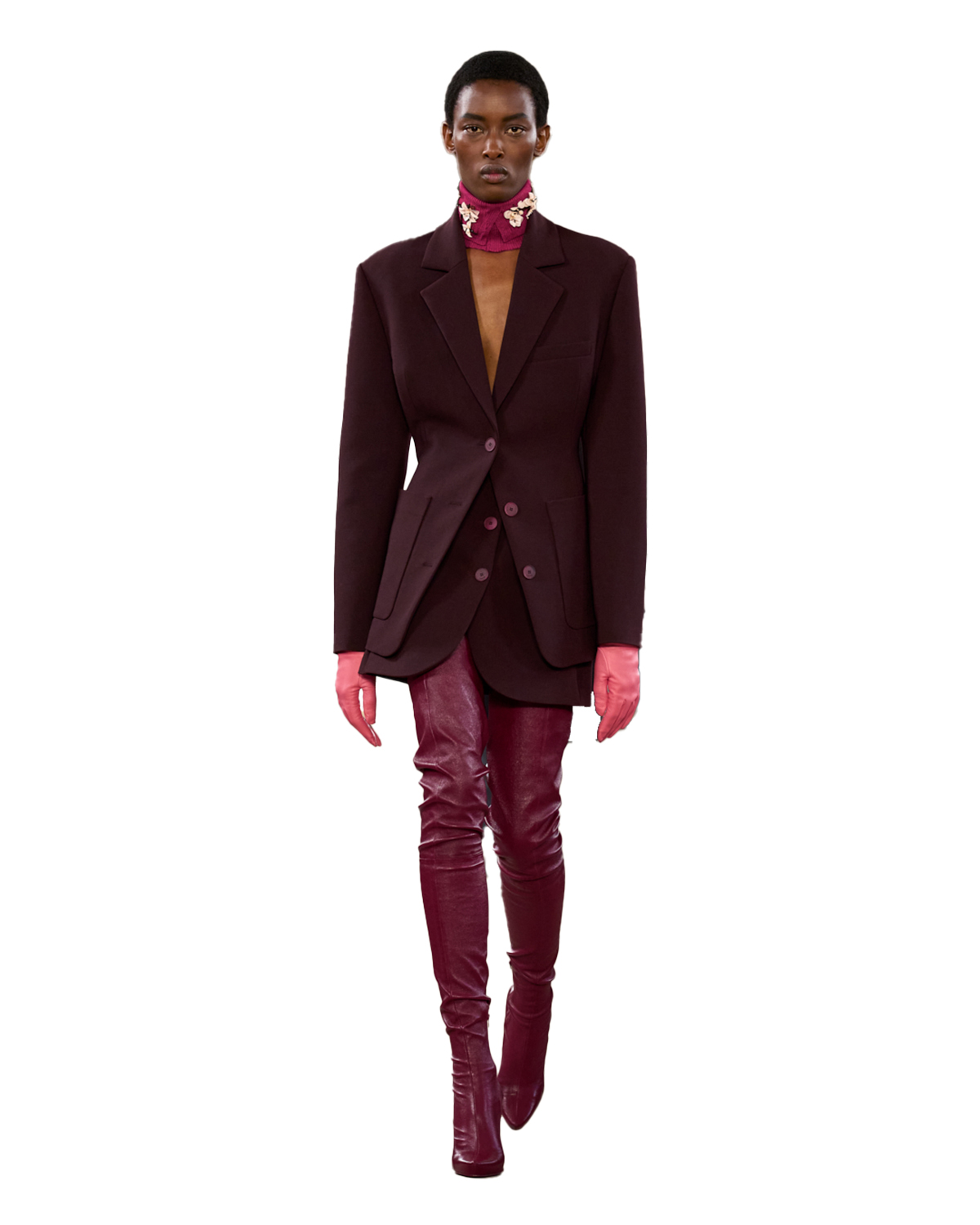
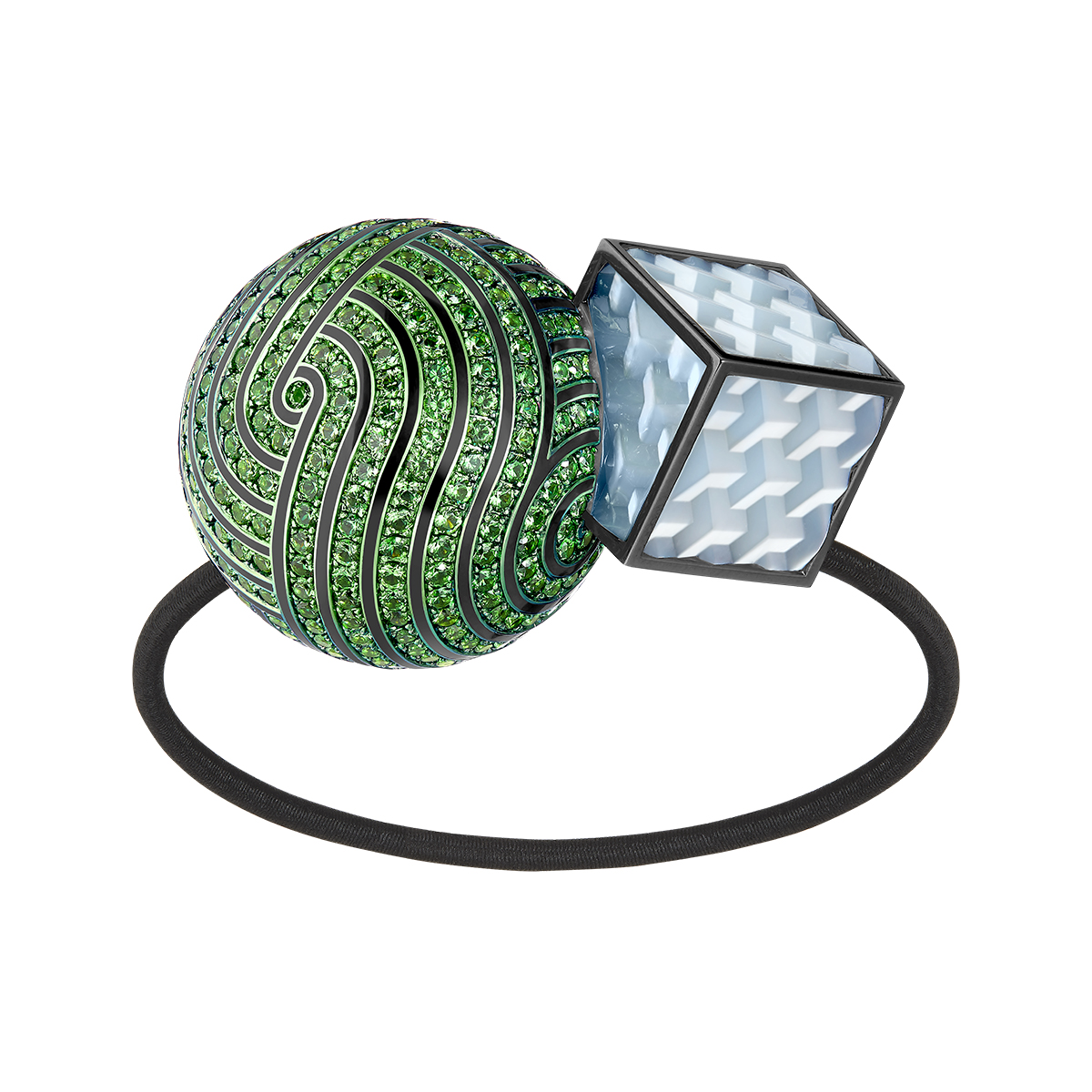
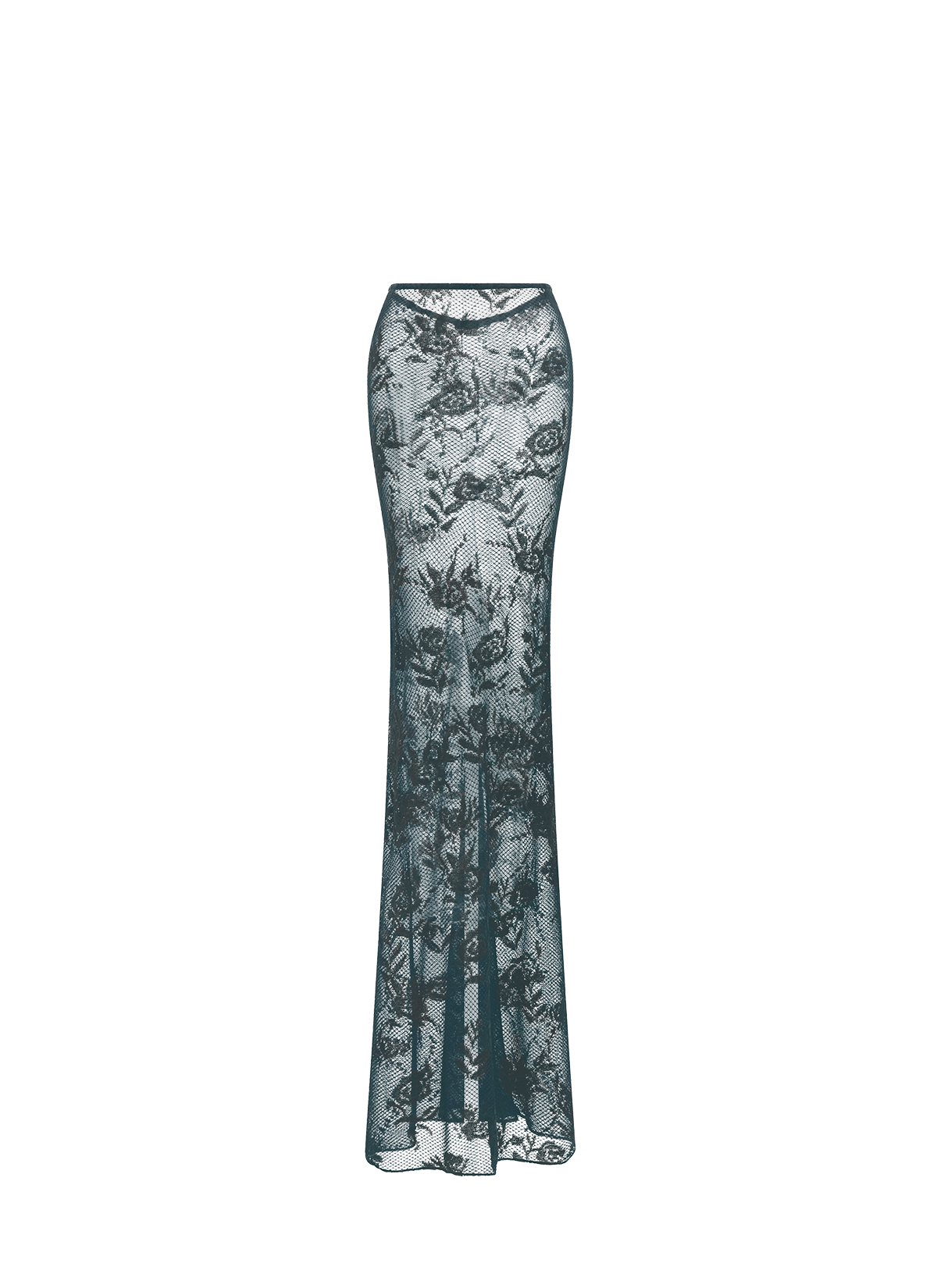


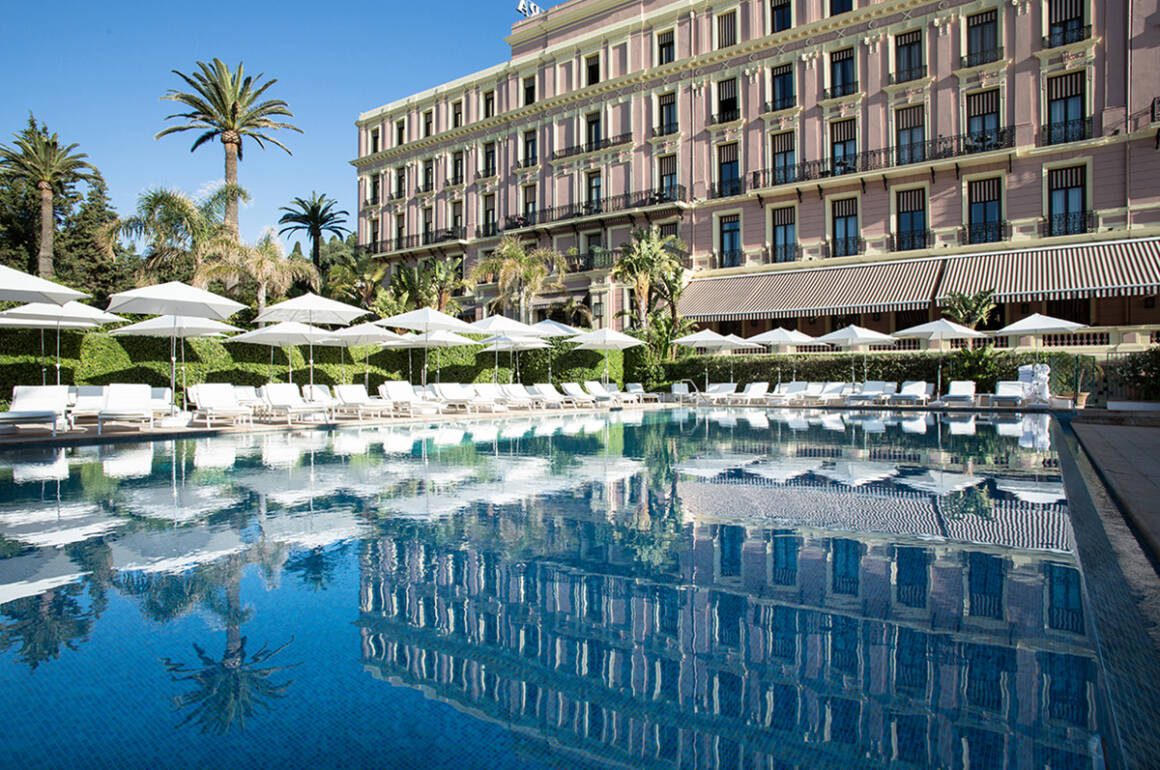
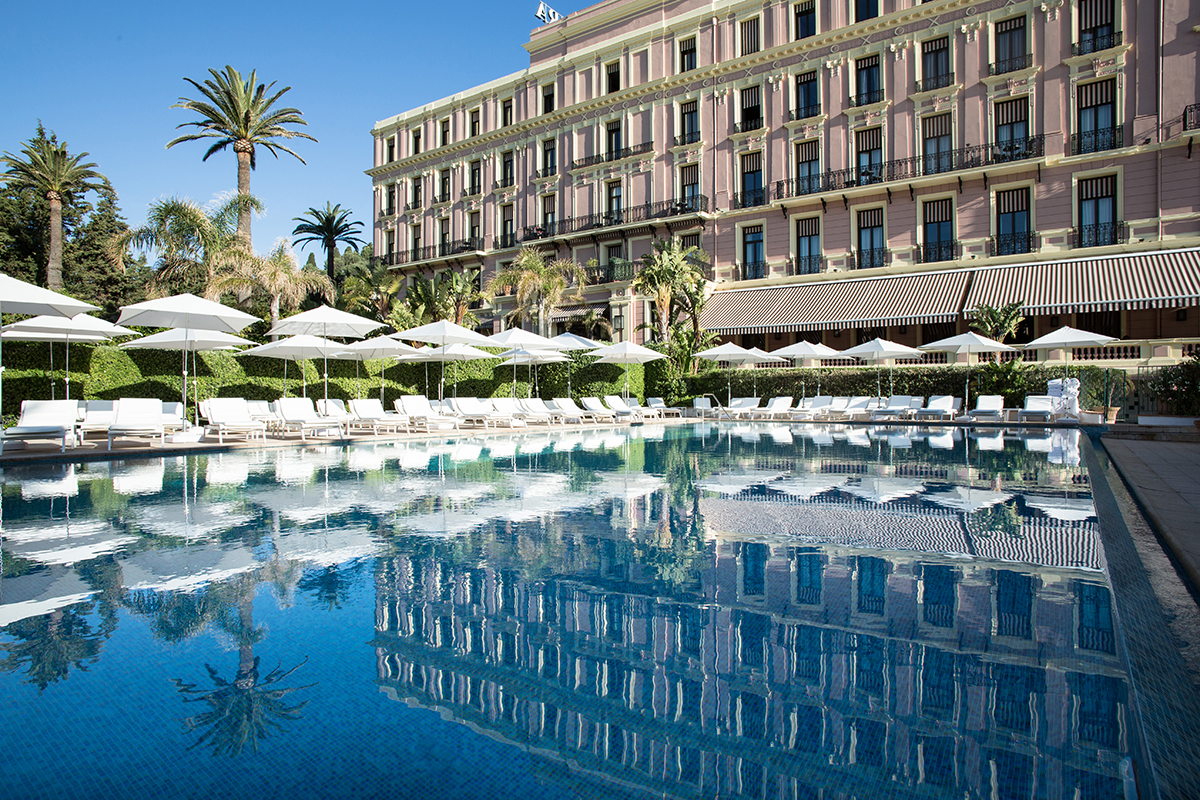
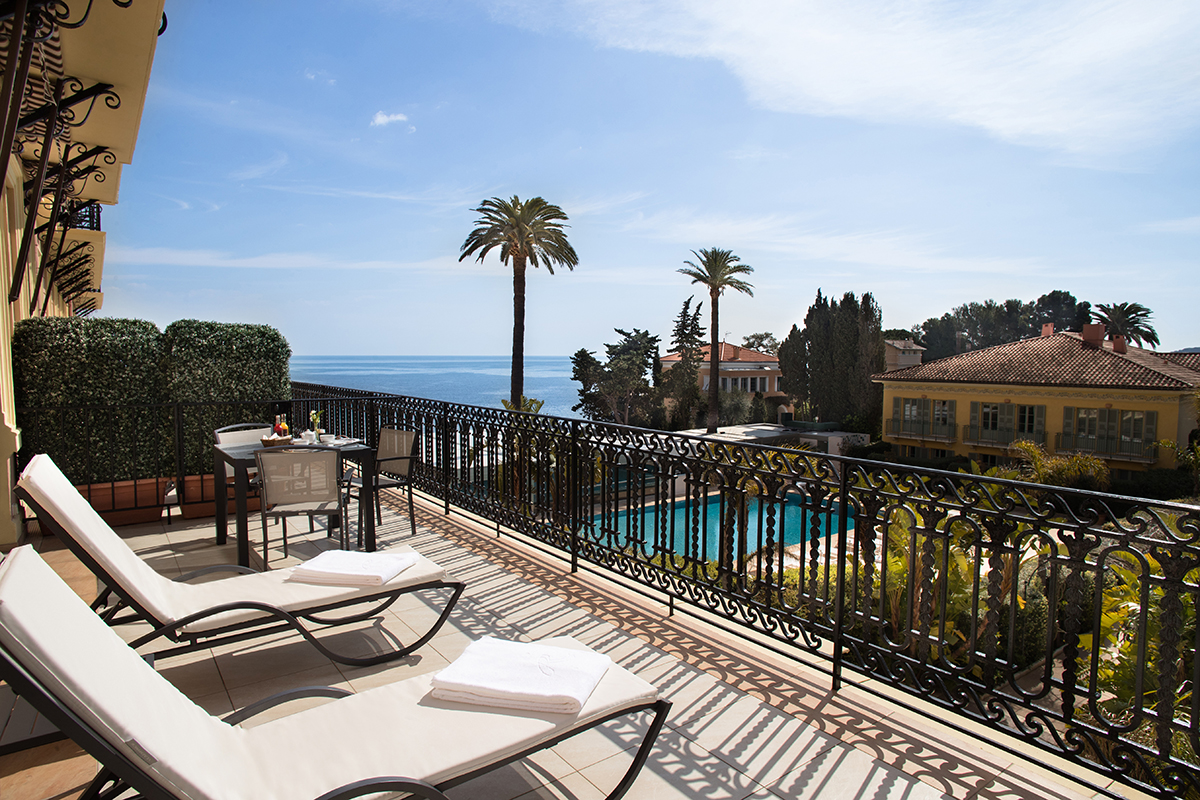
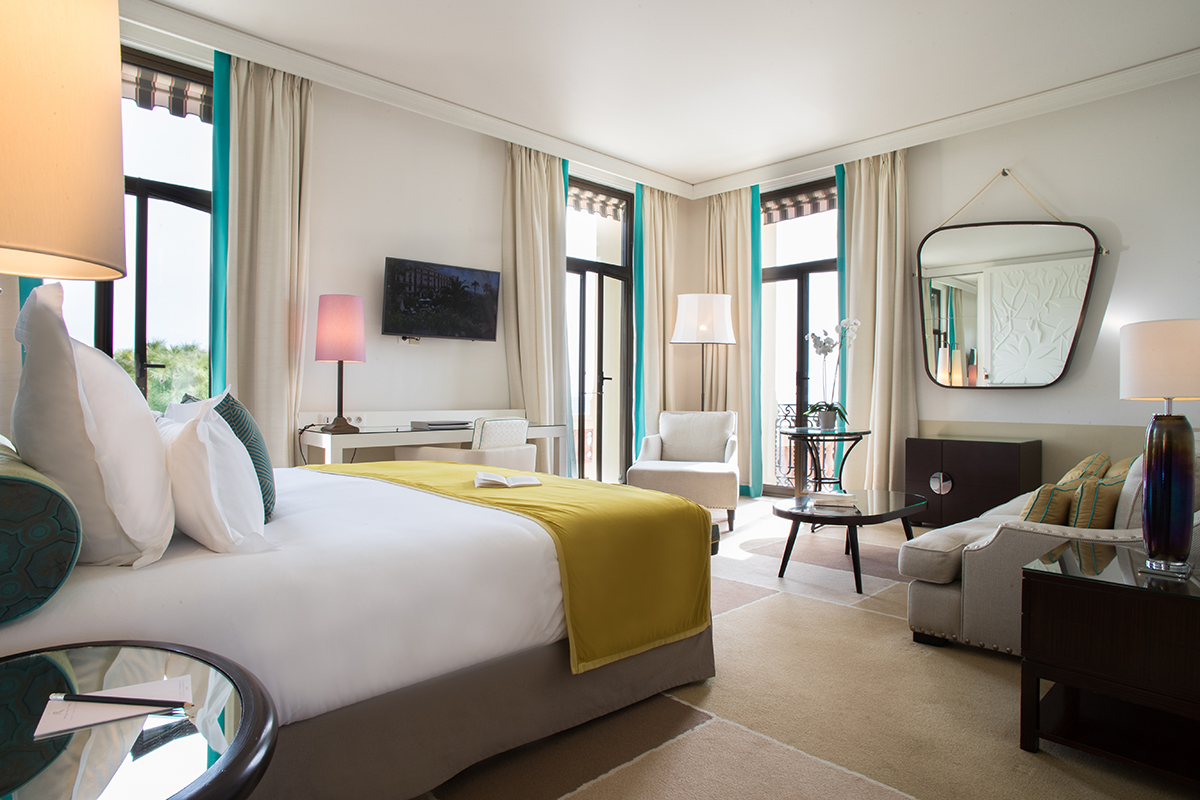
















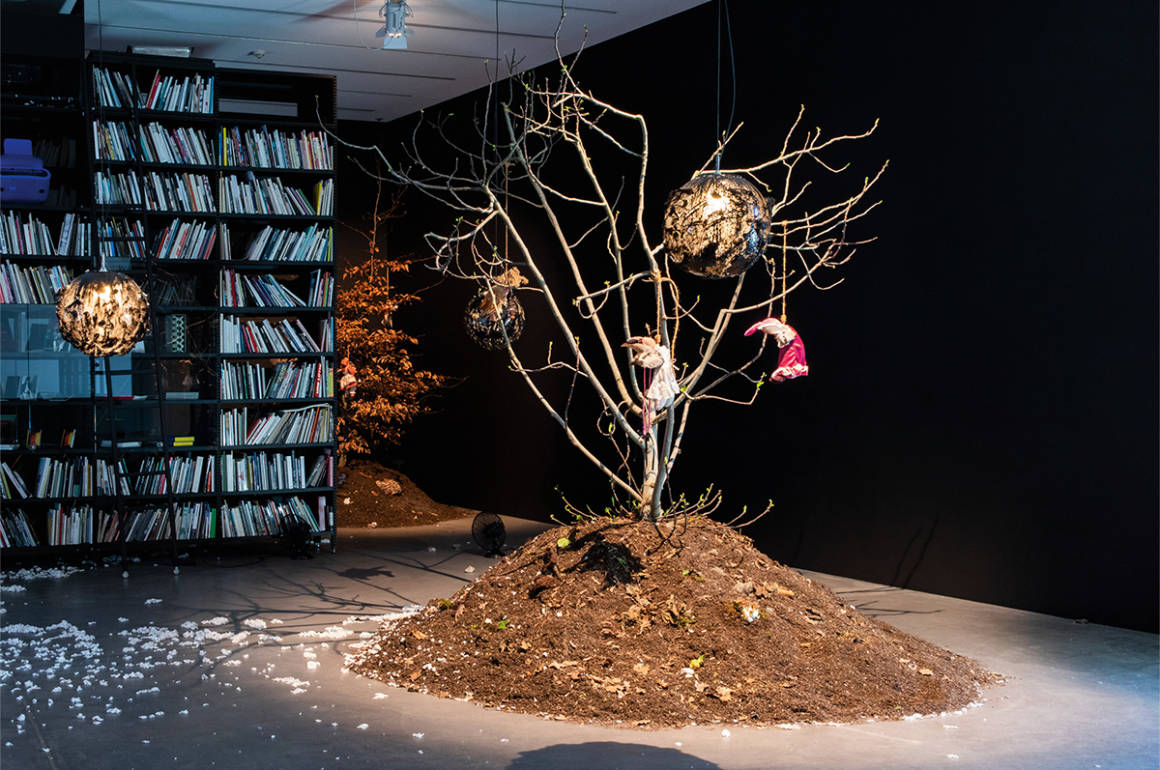
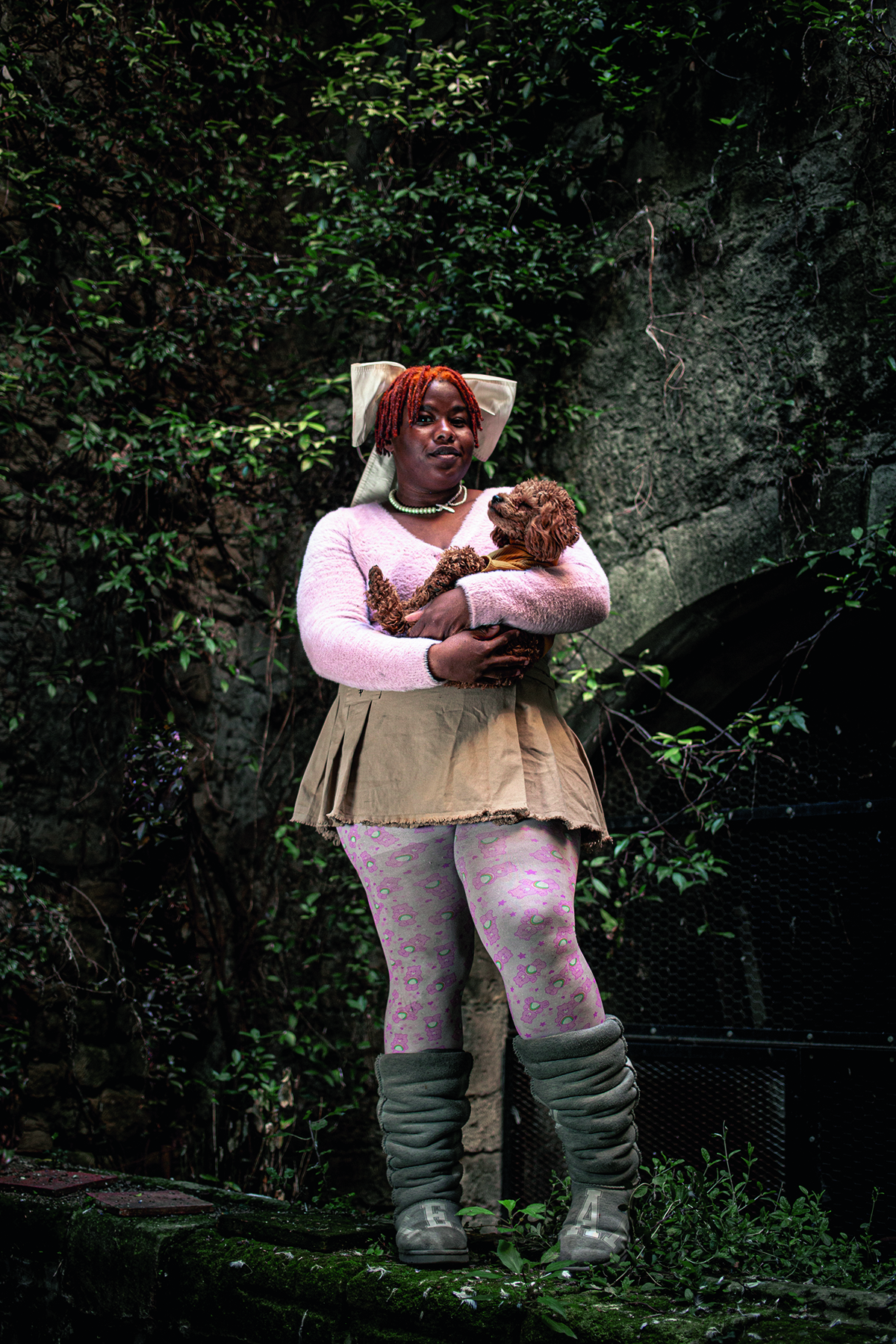
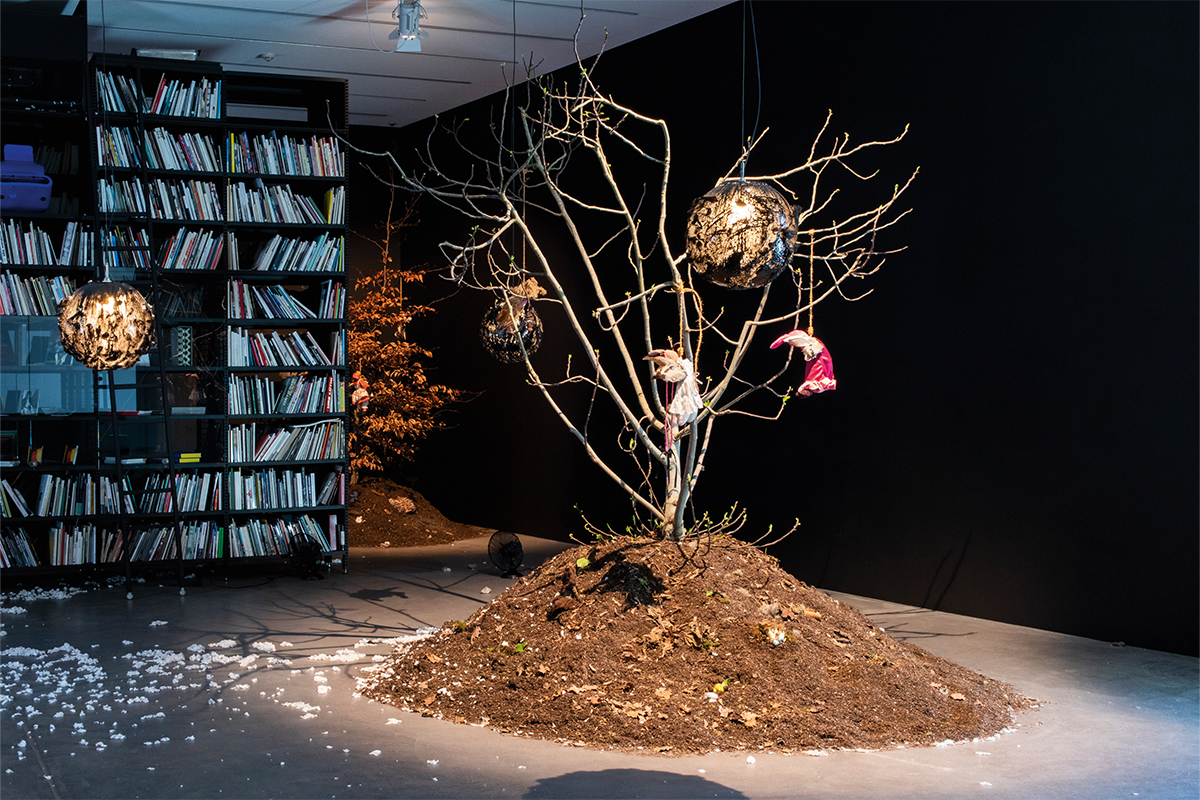
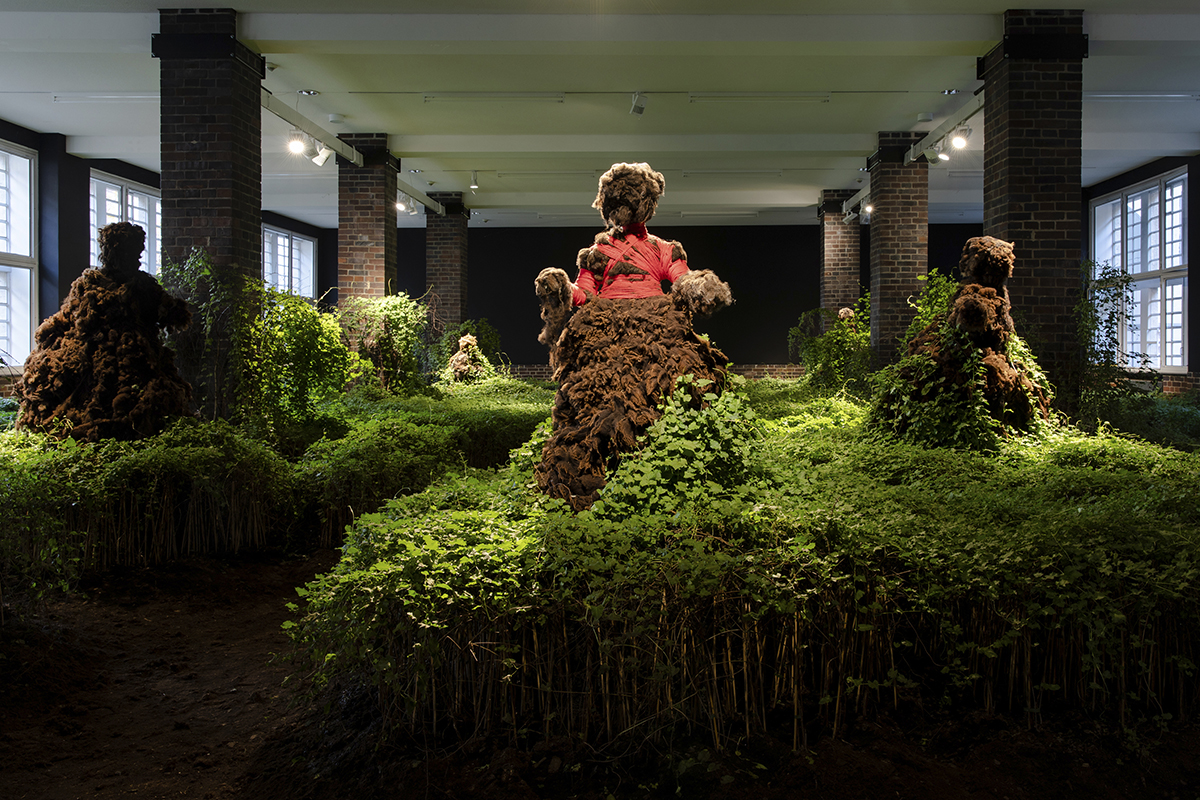
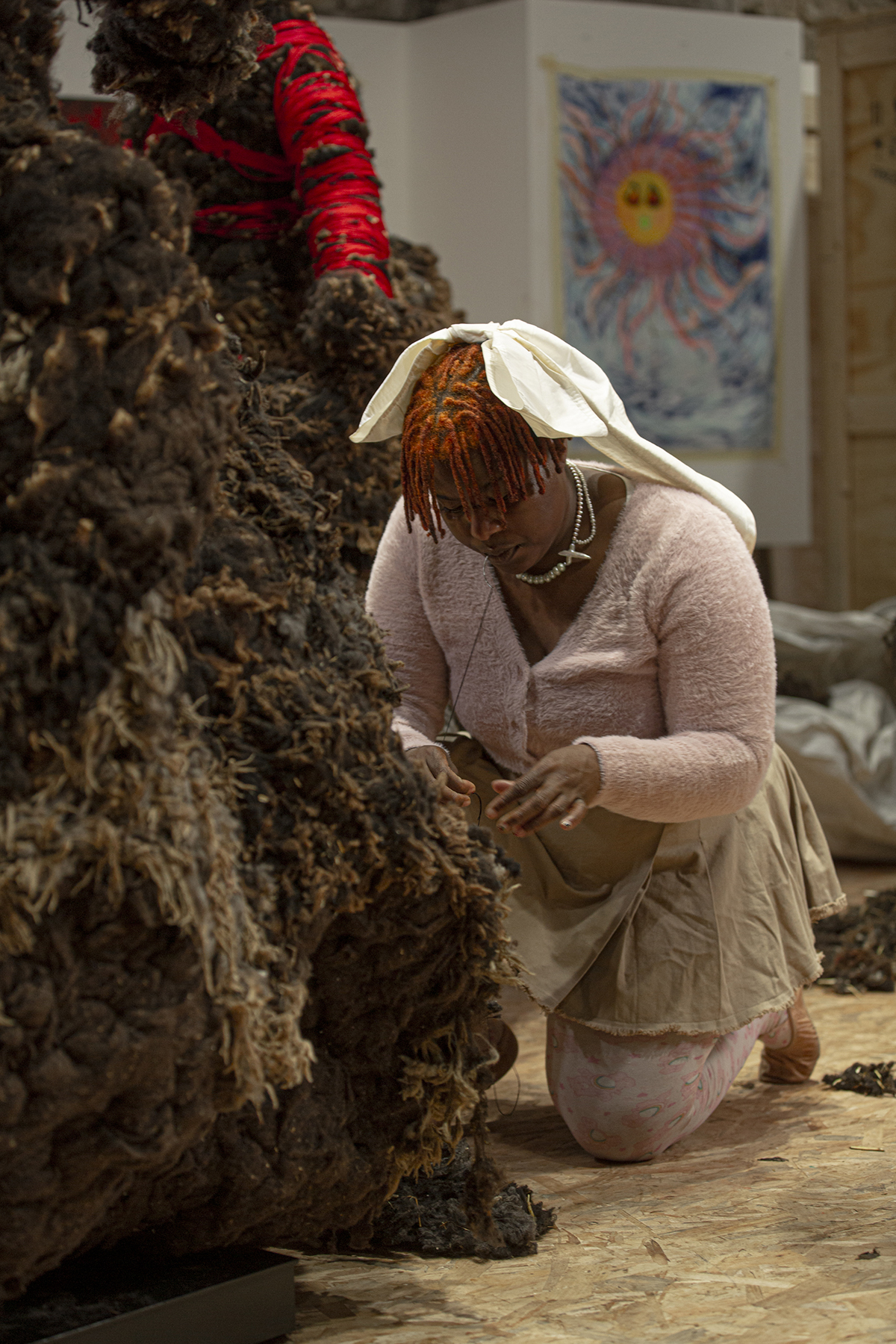
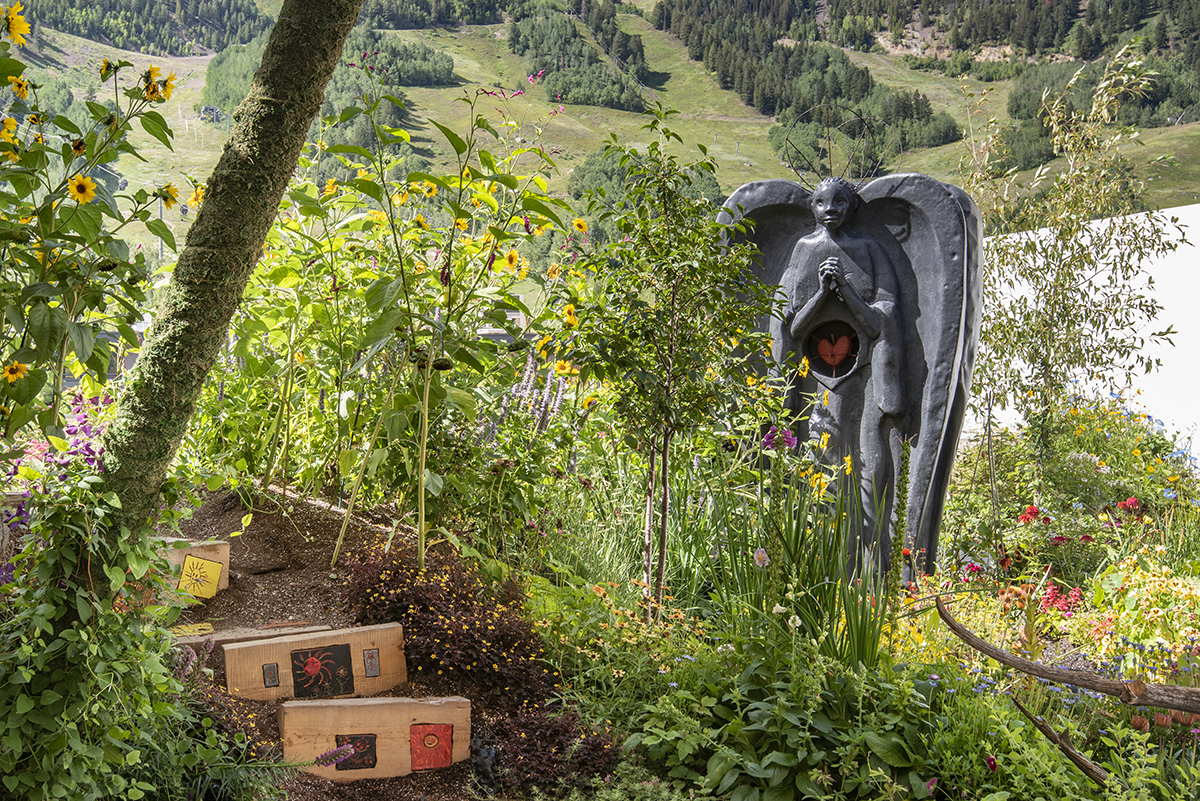
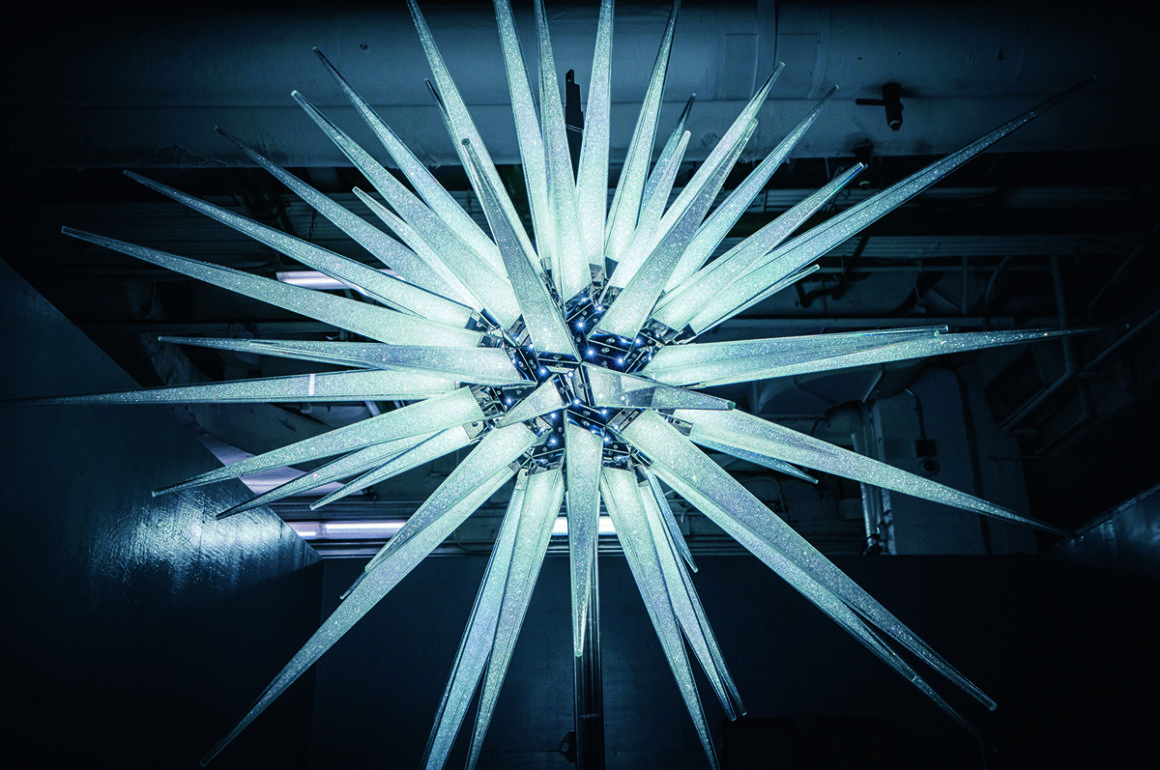
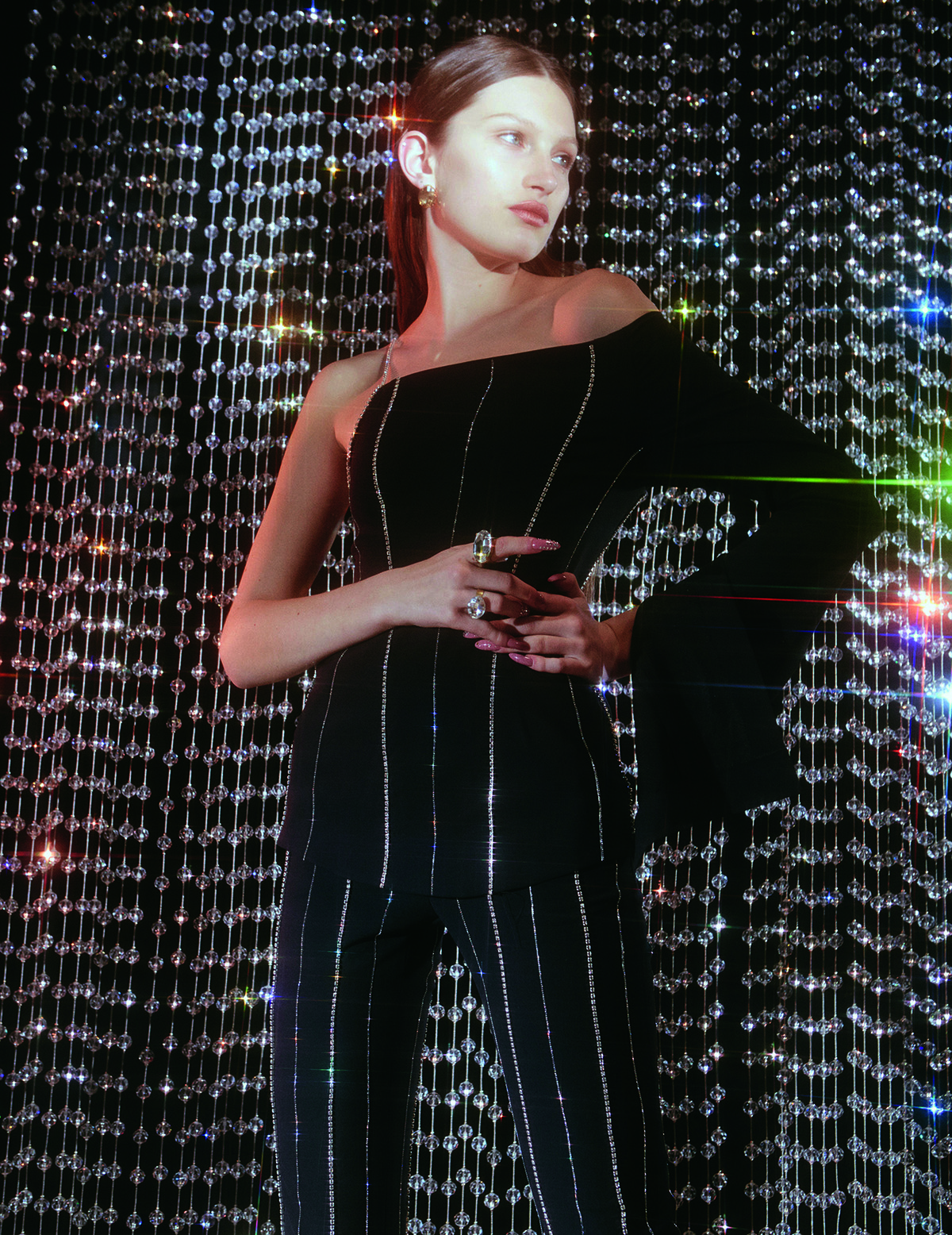
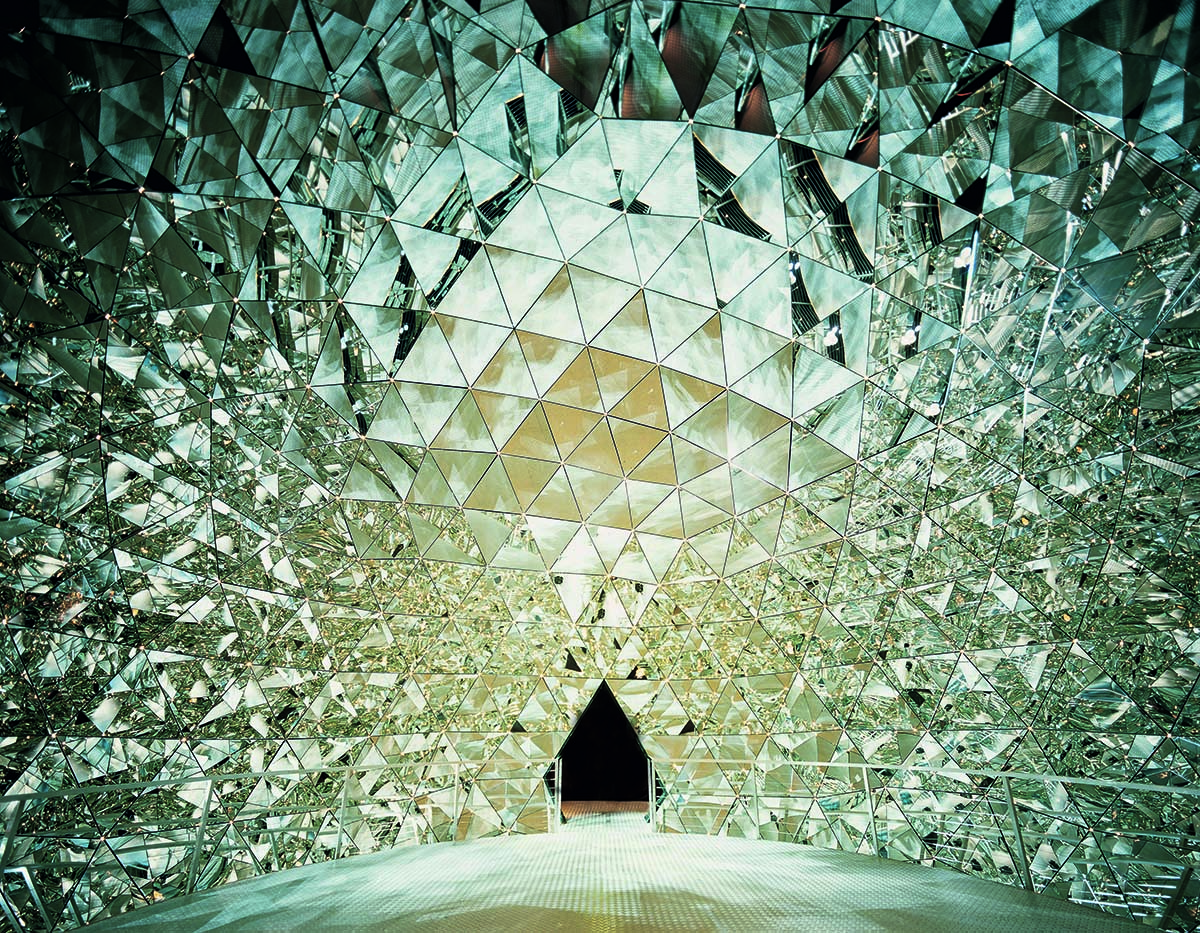
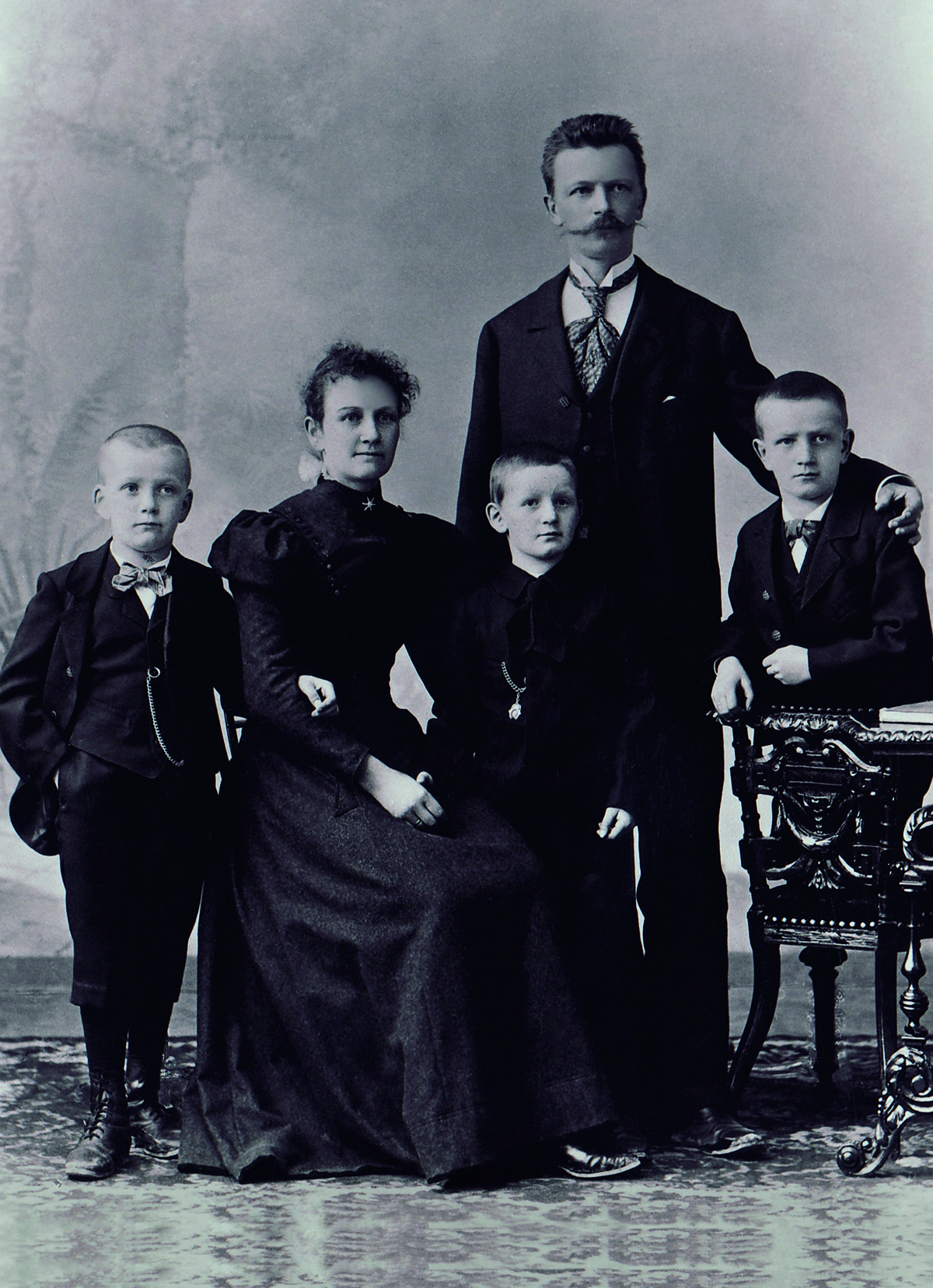
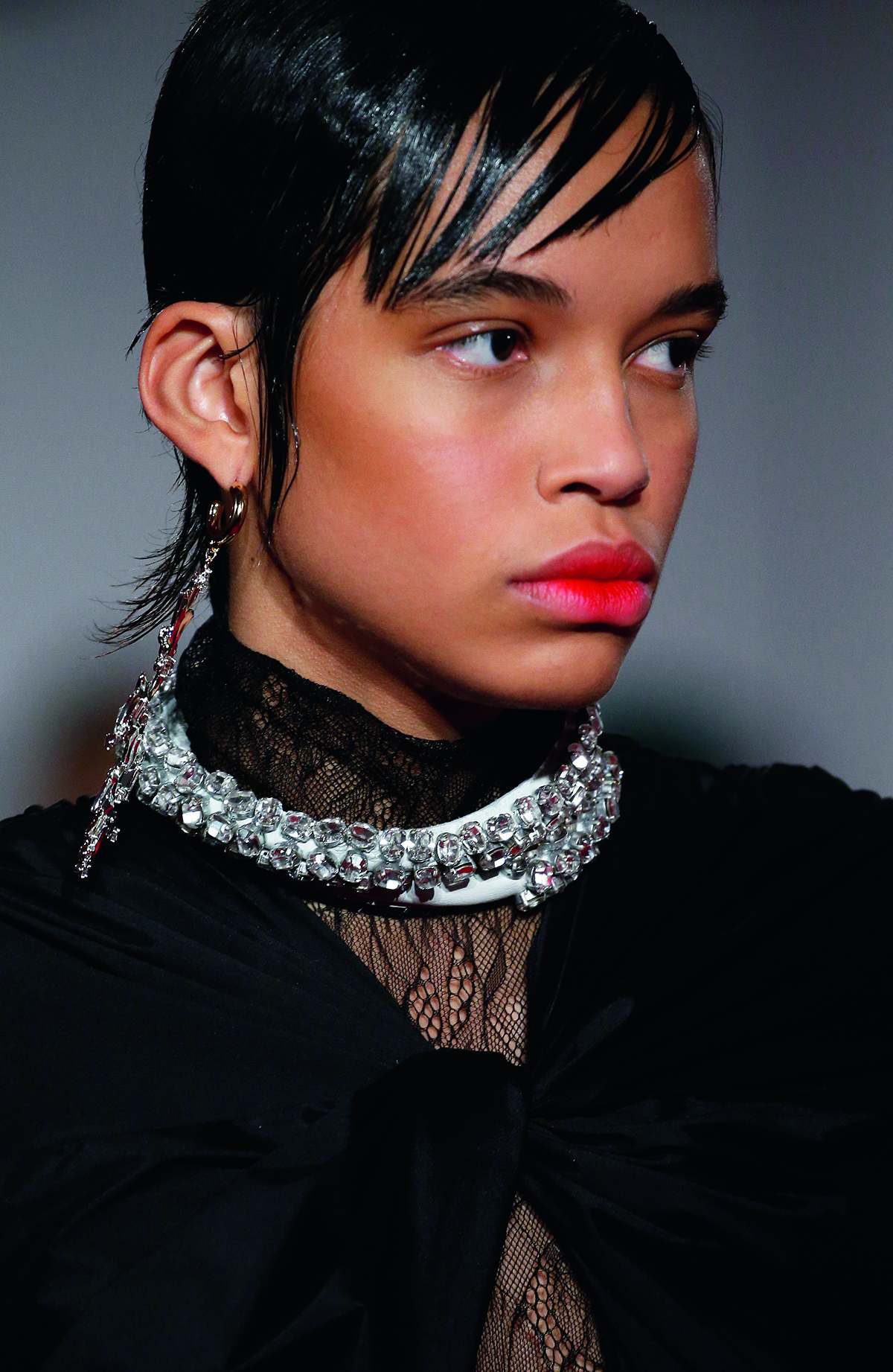
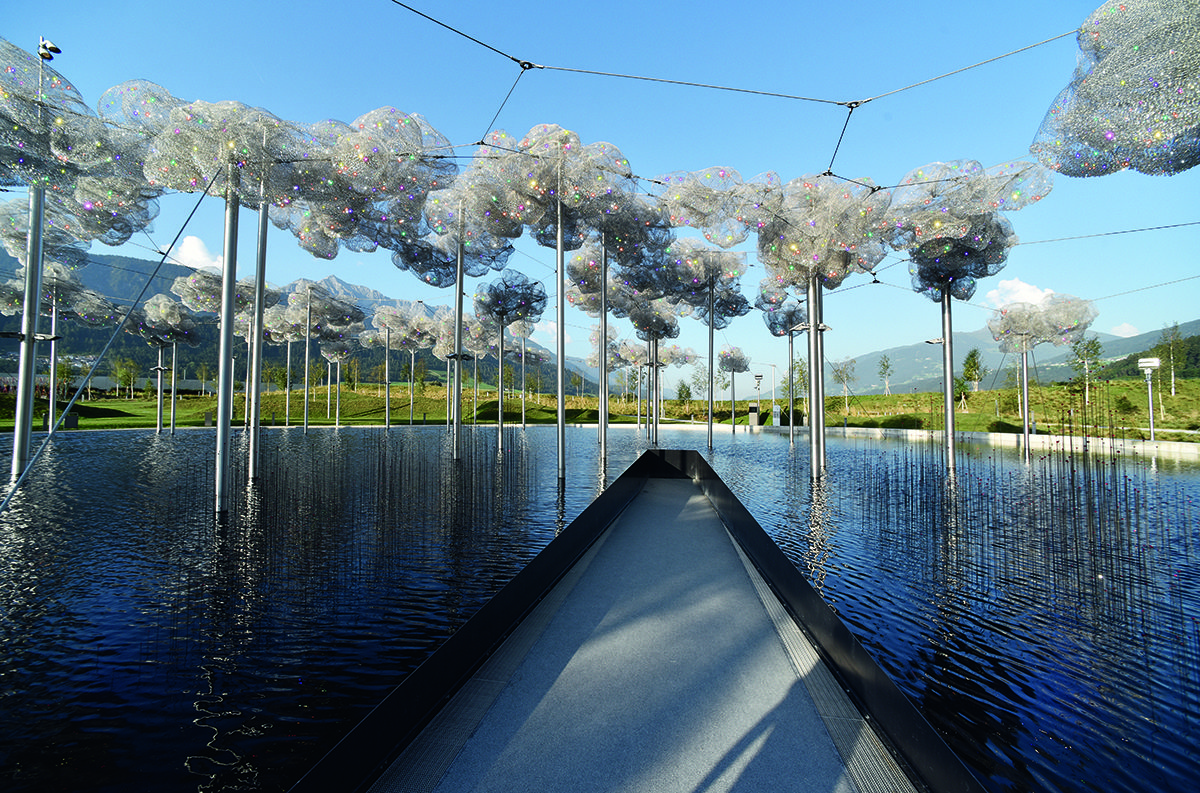
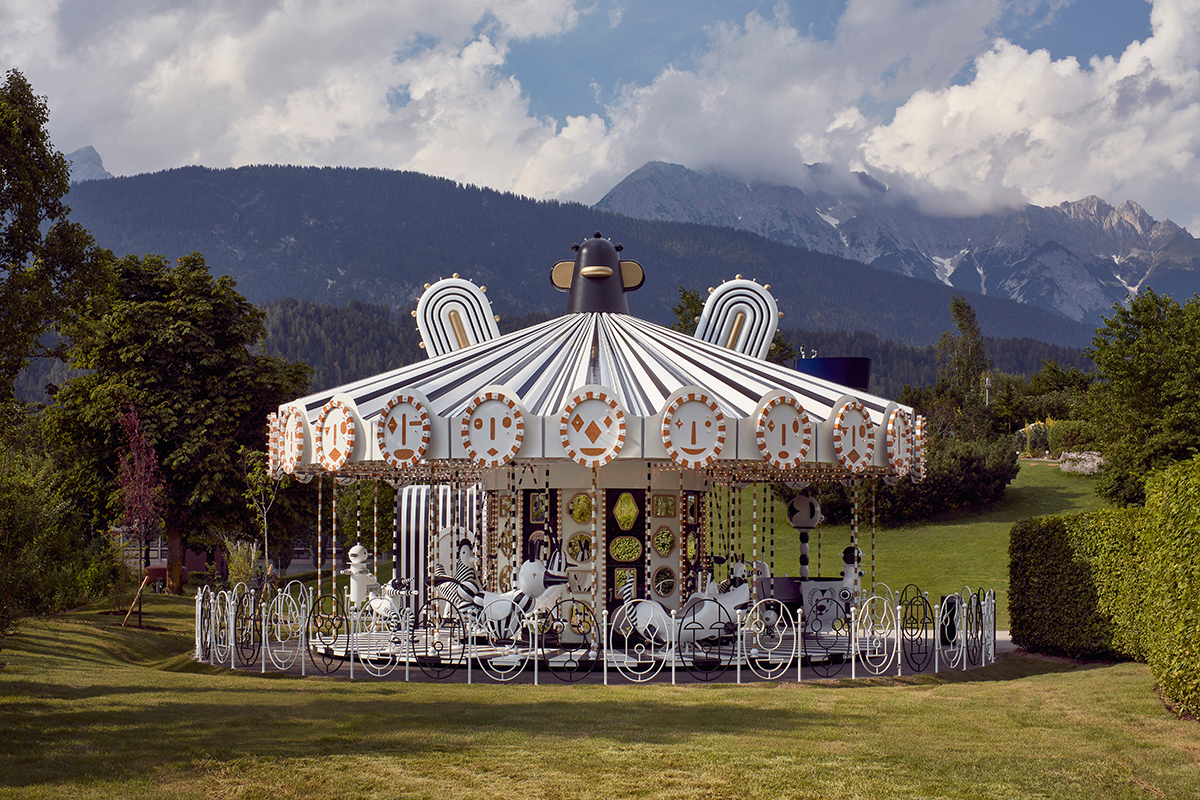
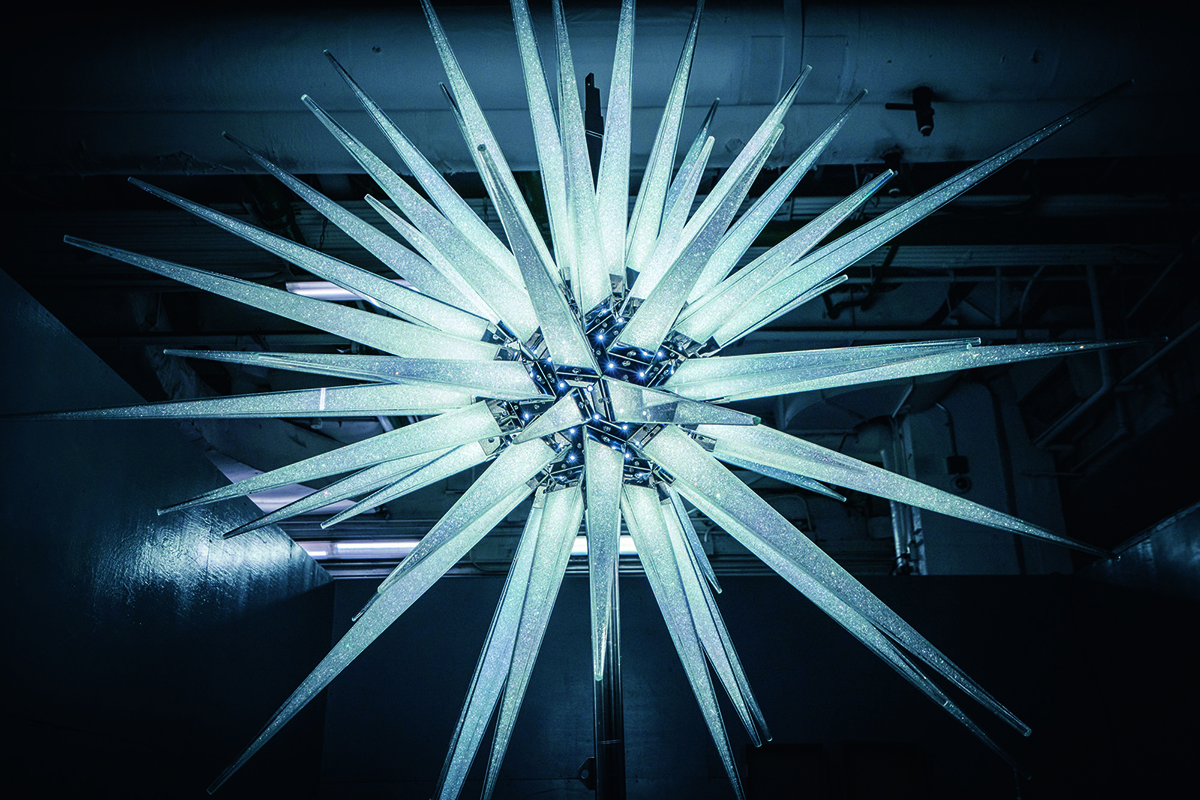
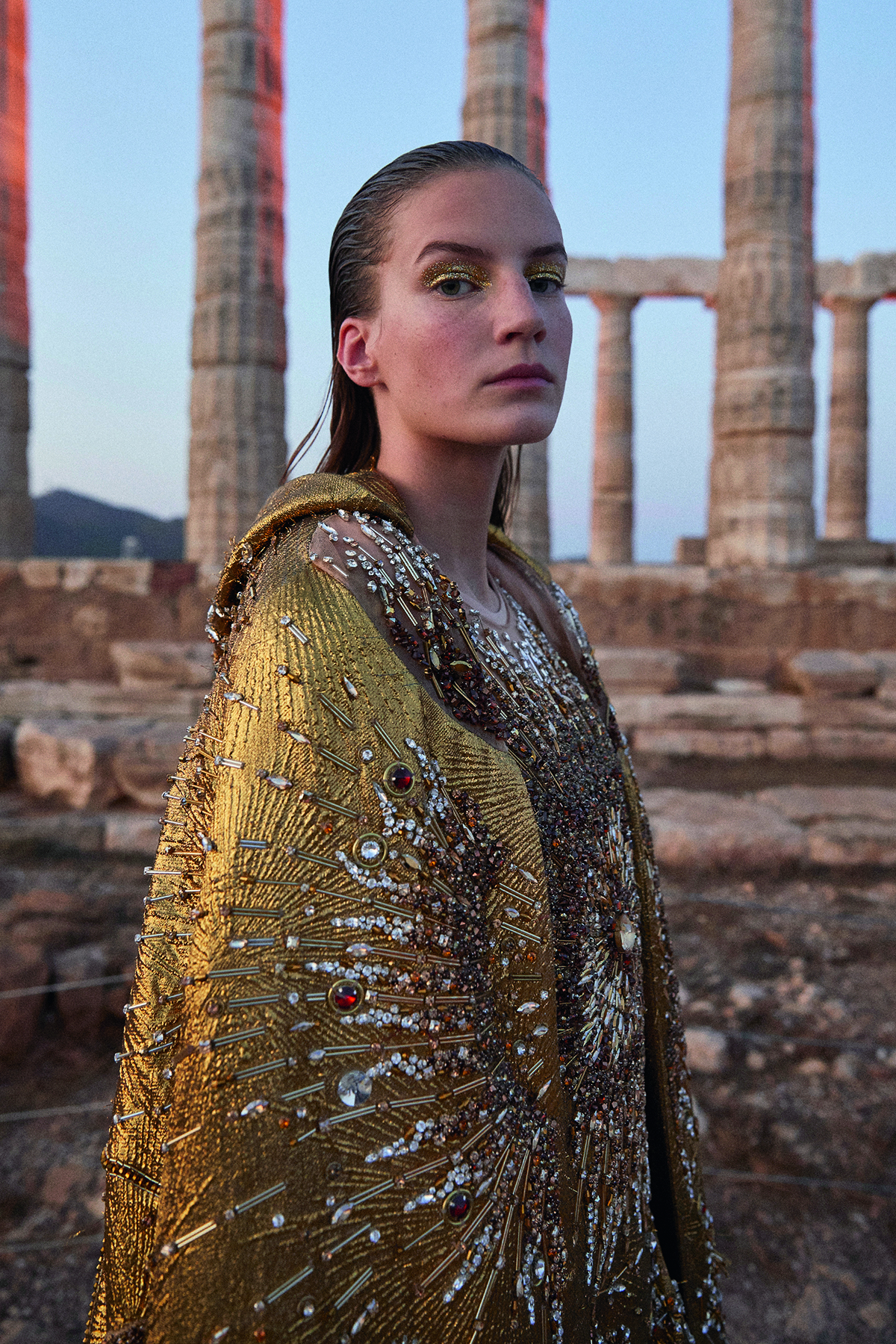
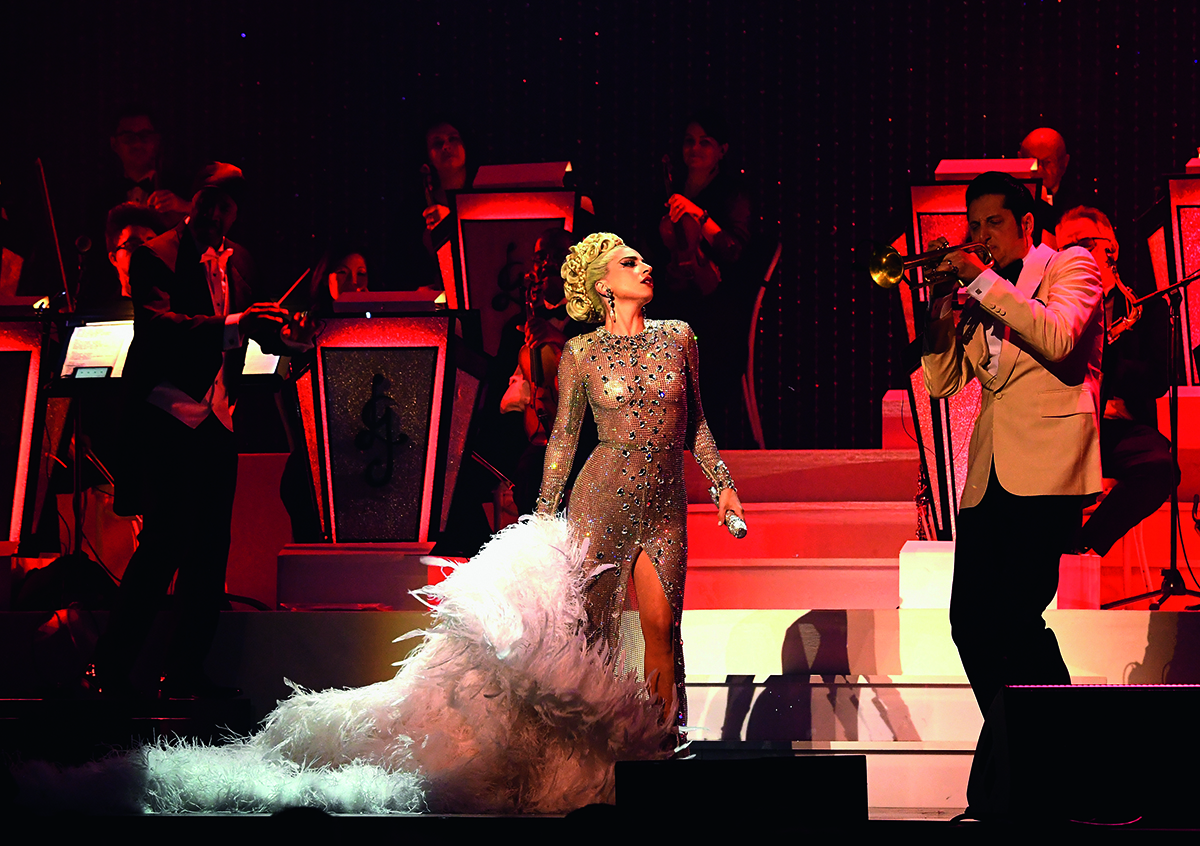
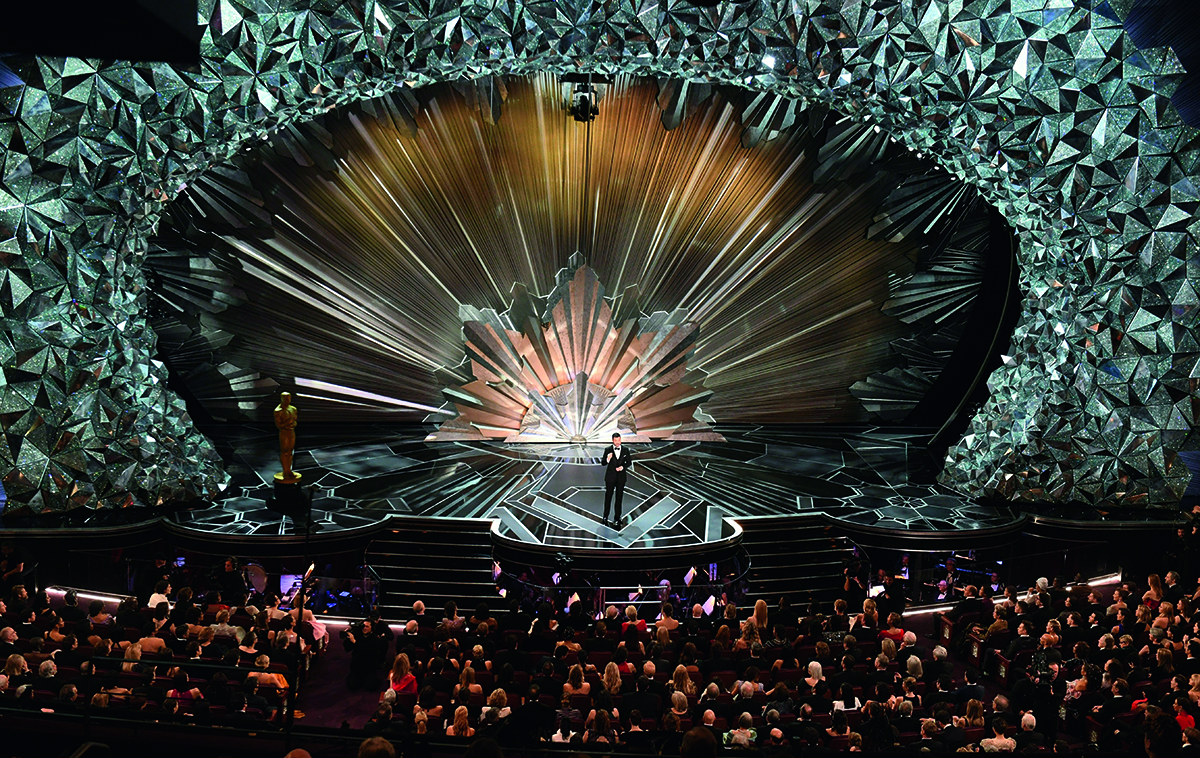
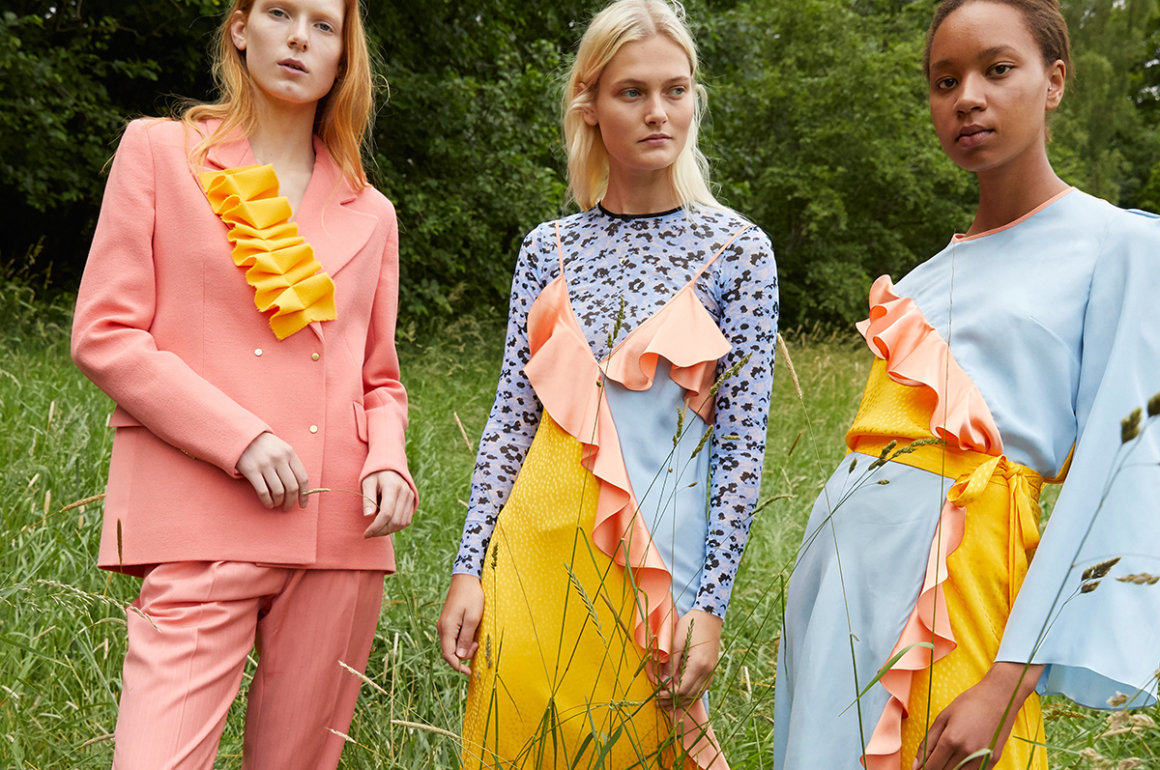
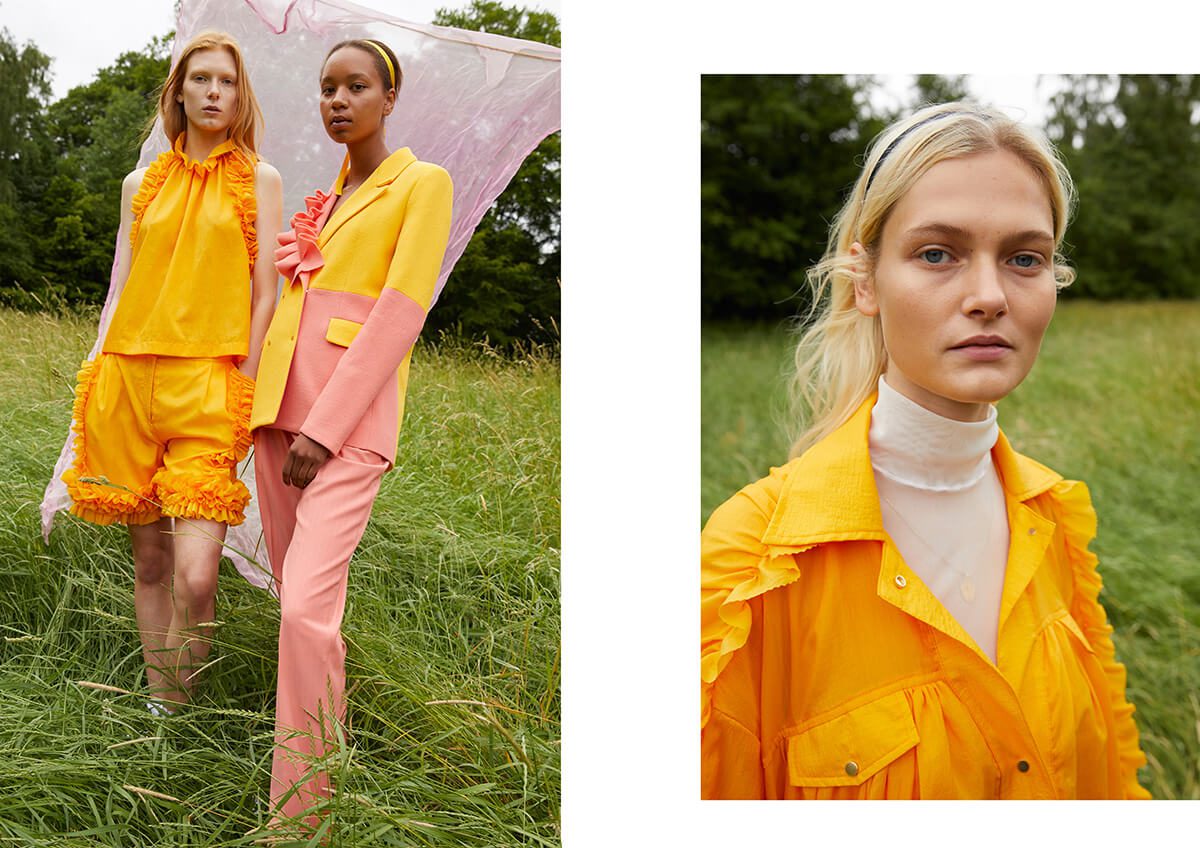
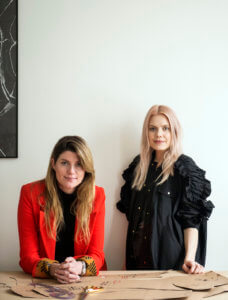
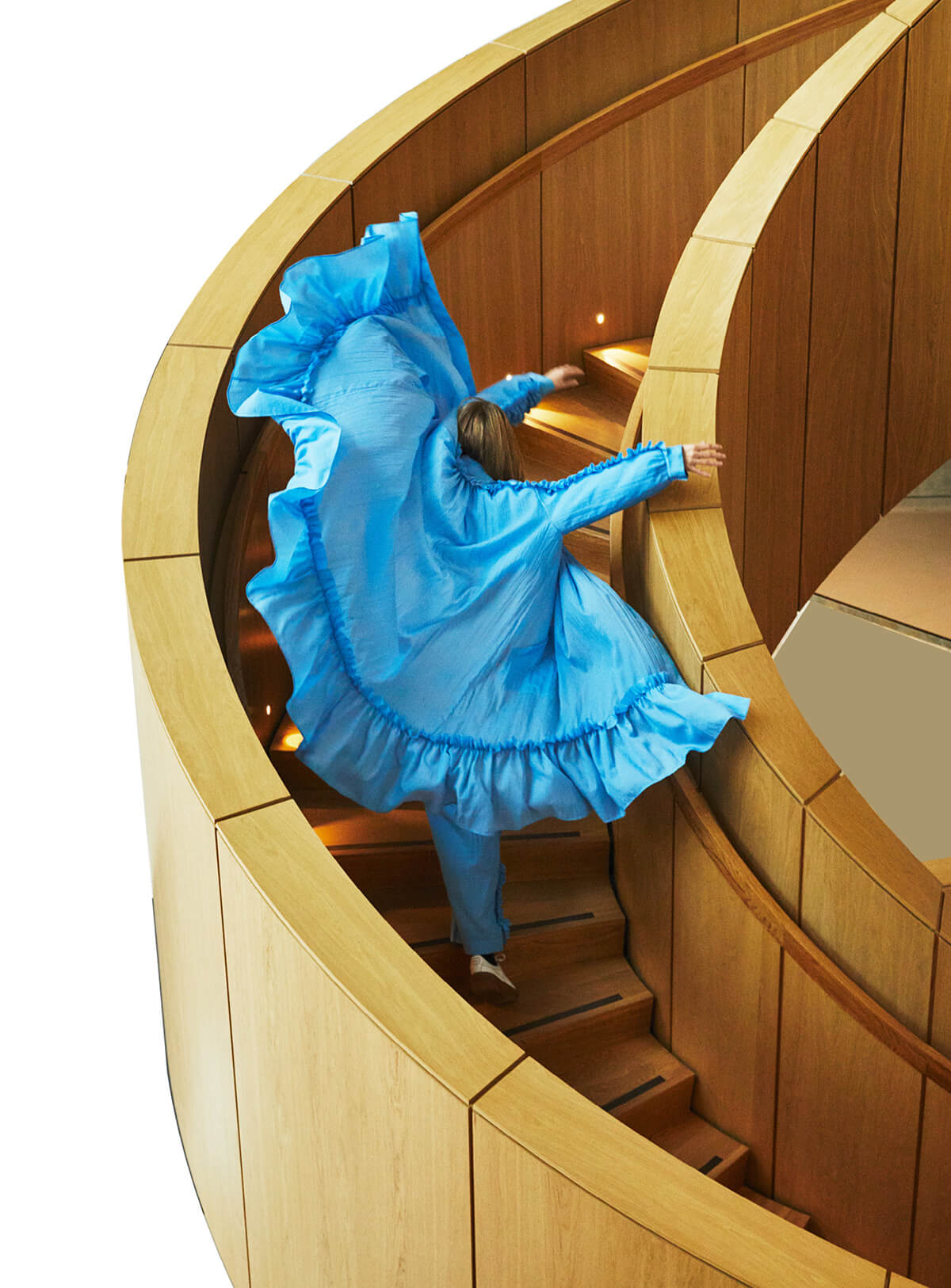
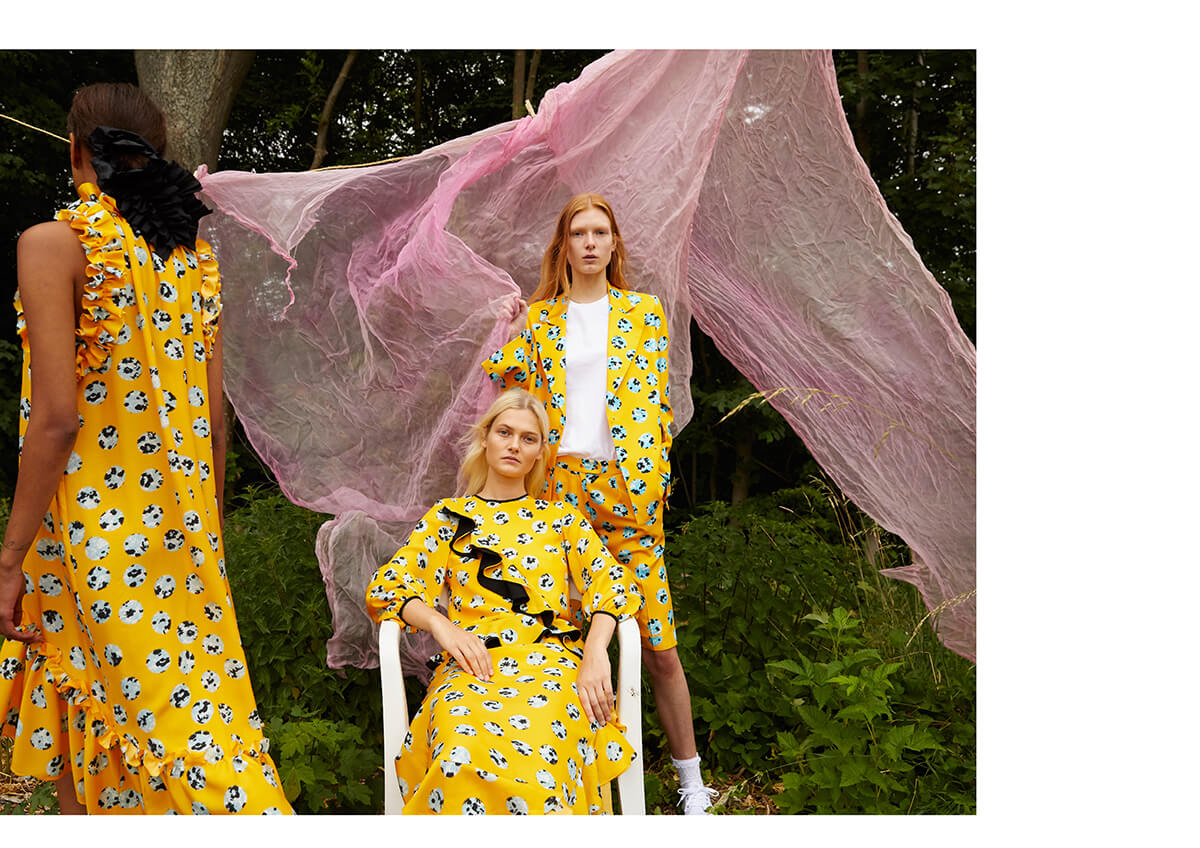
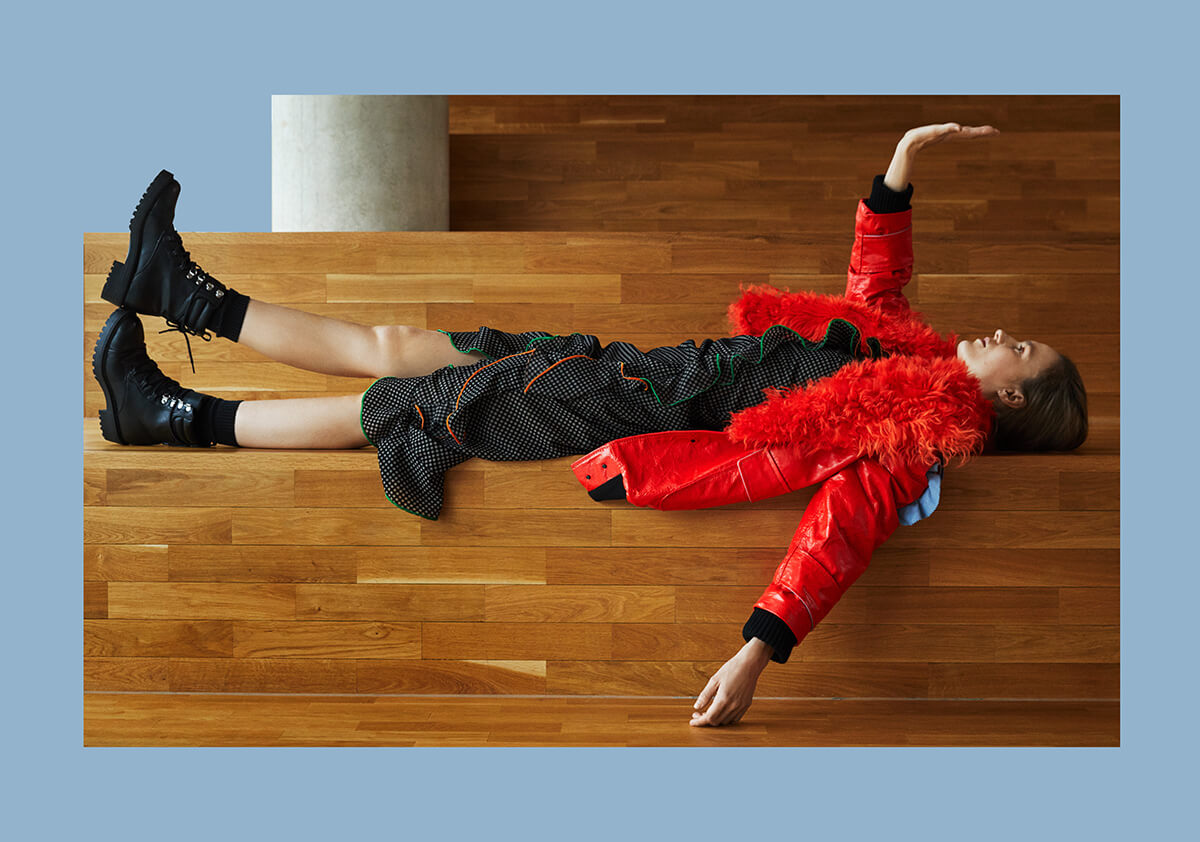
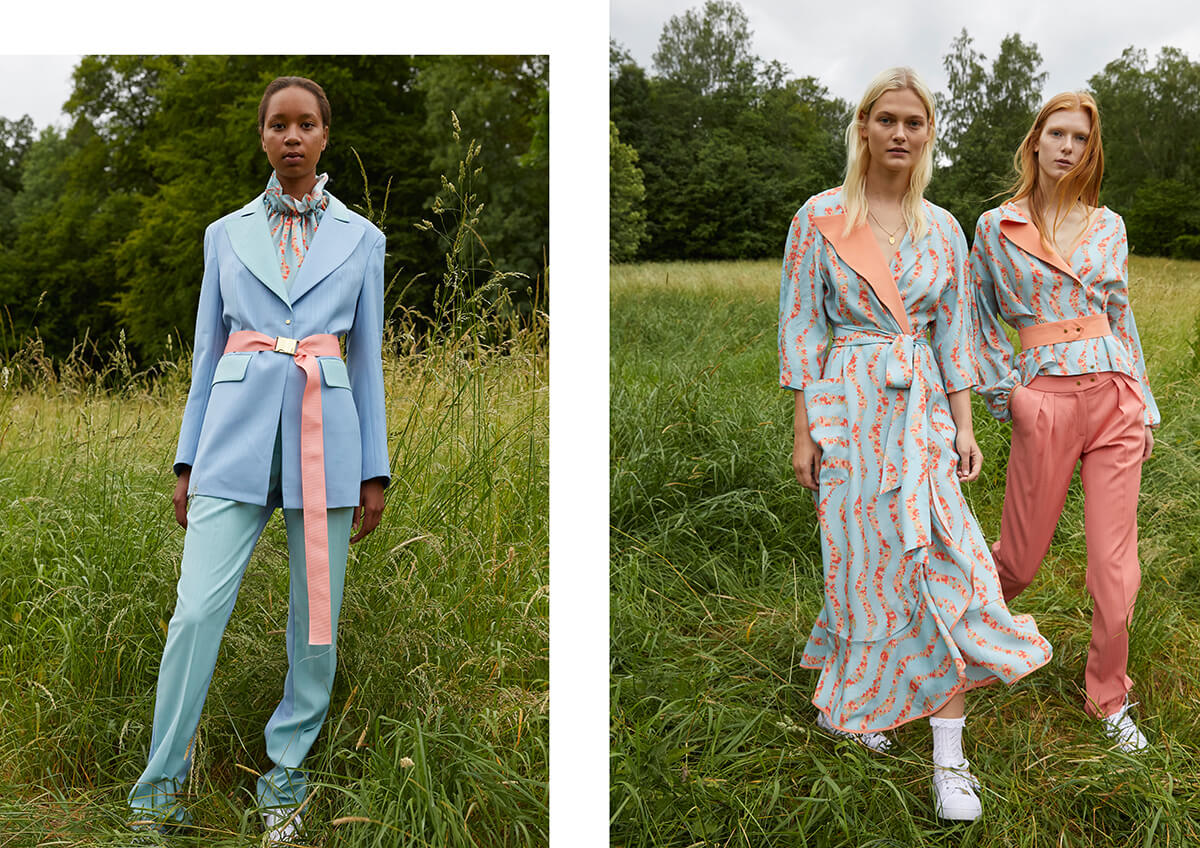
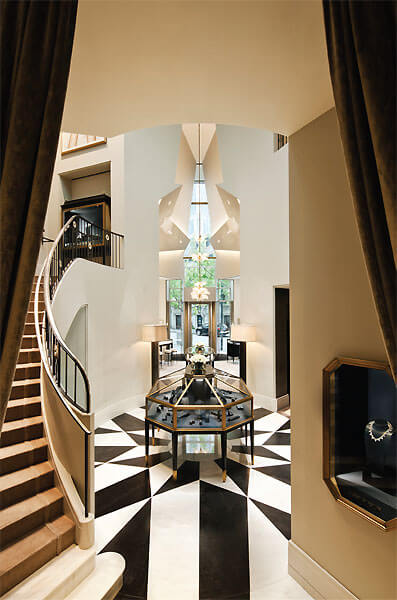


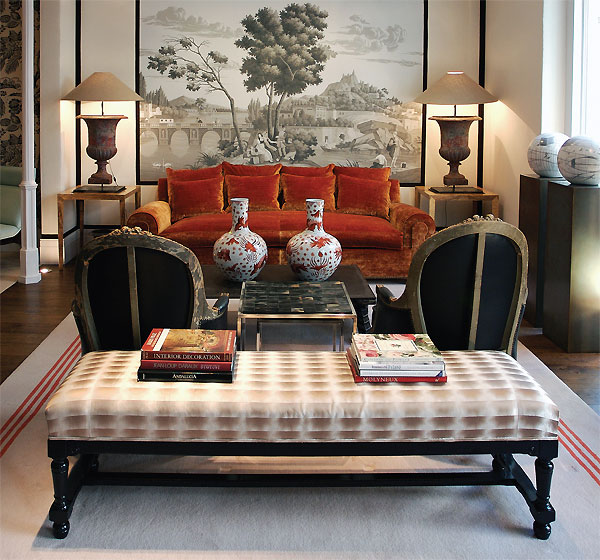

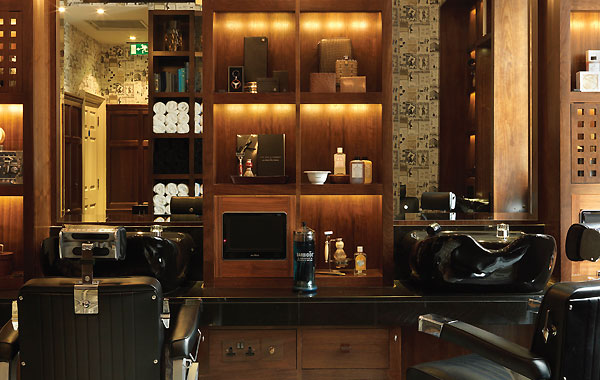










Recent Comments